
- Kindle Store
- Kindle eBooks
- Religion & Spirituality
Promotions apply when you purchase
These promotions will be applied to this item:
Some promotions may be combined; others are not eligible to be combined with other offers. For details, please see the Terms & Conditions associated with these promotions.

Buy for others
Buying and sending ebooks to others.
- Select quantity
- Buy and send eBooks
- Recipients can read on any device
These ebooks can only be redeemed by recipients in the US. Redemption links and eBooks cannot be resold.

Download the free Kindle app and start reading Kindle books instantly on your smartphone, tablet, or computer - no Kindle device required .
Read instantly on your browser with Kindle for Web.
Using your mobile phone camera - scan the code below and download the Kindle app.

Image Unavailable

- To view this video download Flash Player
Follow the author

Journey Through Ruth: 30 Biblical Insights By Sim Kay Tee (Journey Through Series: History) Kindle Edition
- Part of series Journey Through Series: History
- Print length 106 pages
- Language English
- Sticky notes On Kindle Scribe
- Publication date April 6, 2022
- File size 2031 KB
- Page Flip Enabled
- Word Wise Enabled
- Enhanced typesetting Enabled
- See all details

- Next 4 for you in this series $33.56
- All 5 for you in this series $41.95

Customers who bought this item also bought

Product details
- ASIN : B09XF1W189
- Publisher : Discovery House Publishing (April 6, 2022)
- Publication date : April 6, 2022
- Language : English
- File size : 2031 KB
- Text-to-Speech : Enabled
- Screen Reader : Supported
- Enhanced typesetting : Enabled
- X-Ray : Not Enabled
- Word Wise : Enabled
- Sticky notes : On Kindle Scribe
- Print length : 106 pages
- #4,322 in Christian Old Testament Study
- #13,836 in Old Testament Bible Study (Books)
- #33,281 in Christian Spiritual Growth (Kindle Store)
About the author
Kay tee sim.
Sim Kay Tee is a Bible teacher and writer of Our Daily Bread Ministries. Based in Singapore, K.T. writes for the Discovery Series Bible Study guides, the Journey Through Series devotional, and is a regular contributor to the Insights for Our Daily Bread. K.T. has taught the Bible in various countries. He has three daughters and one granddaughter.
Customer reviews
Customer Reviews, including Product Star Ratings help customers to learn more about the product and decide whether it is the right product for them.
To calculate the overall star rating and percentage breakdown by star, we don’t use a simple average. Instead, our system considers things like how recent a review is and if the reviewer bought the item on Amazon. It also analyzed reviews to verify trustworthiness.
No customer reviews
- Amazon Newsletter
- About Amazon
- Accessibility
- Sustainability
- Press Center
- Investor Relations
- Amazon Devices
- Amazon Science
- Sell on Amazon
- Sell apps on Amazon
- Supply to Amazon
- Protect & Build Your Brand
- Become an Affiliate
- Become a Delivery Driver
- Start a Package Delivery Business
- Advertise Your Products
- Self-Publish with Us
- Become an Amazon Hub Partner
- › See More Ways to Make Money
- Amazon Visa
- Amazon Store Card
- Amazon Secured Card
- Amazon Business Card
- Shop with Points
- Credit Card Marketplace
- Reload Your Balance
- Amazon Currency Converter
- Your Account
- Your Orders
- Shipping Rates & Policies
- Amazon Prime
- Returns & Replacements
- Manage Your Content and Devices
- Recalls and Product Safety Alerts
- Conditions of Use
- Privacy Notice
- Consumer Health Data Privacy Disclosure
- Your Ads Privacy Choices

The Journey Through Ruth
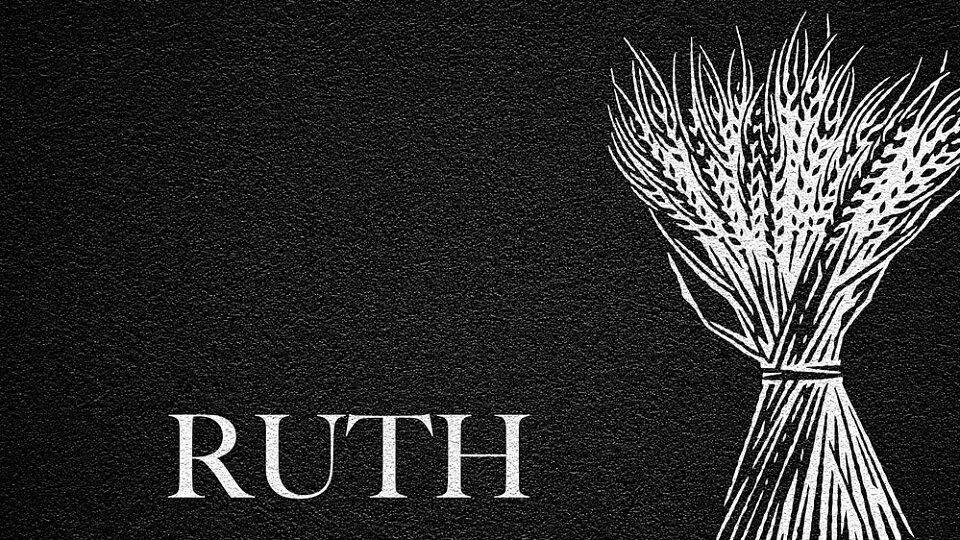
The Wisdom Journey through Ruth.
In the midst of the dark days of the Judges, we find a beautiful story of love and faith and faithfulness recounted in the little book of Ruth. When Israel as a nation had turned away from the Lord, a man named Boaz remained faithful to God and His Word. When the pagan nations surrounding Israel were steeped in idolatry and far from the truth, God’s grace reached out to a Moabite woman named Ruth. In His providence God brought these two people together. And through them, God not only gave His people examples of godly character but also illustrated the concept of the kinsman-redeemer, which would be fulfilled spiritually in the Messiah who would come from their direct line of descendants.
CLICK HERE to purchase the manuscript / study guide.

Once Upon a Time

Three Widows . . . Three Ways
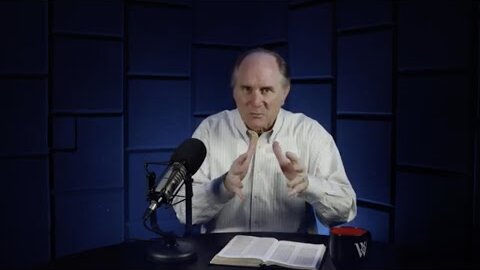
No Such Thing as Chance

A Midnight Proposal
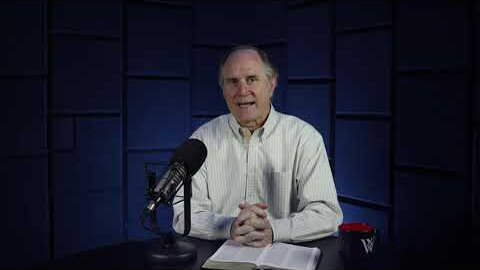
Sealed with a Sandal
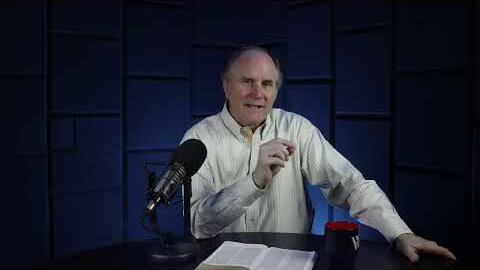
And They Lived Happily Ever After
Do you want the study guides? We will release the study guide for each book along with this message archive. CLICK HERE to purchase study guides for a particular book .
We post each book of The Wisdom Journey as they finish airing. When complete, The Wisdom Journey will take you from Genesis through Revelation in 780 lessons. We would appreciate hearing your comments or suggestions. Click the HELP button in the bottom right corner of your screen to send us a message.
Do Not Remove - This is here for the sake of populating the sitemap.
HELP ONE MORE PERSON DISCOVER JESUS
Read Ruth 1:19-22
As Naomi and Ruth enter Bethlehem, ″the whole town [is] stirred because of them″ (Ruth 1:19). Bethlehem is a small town (Micah 5:2), and the people will have remembered Naomi even after so long. But their question, ″Can this be Naomi?″ (Ruth 1:19), suggests they barely recognise her. Her appearance has been considerably and conspicuously altered by suffering.
The Bible tells of people who were renamed to reflect their changed circumstances (e.g. Genesis 32:28; 35:18; Daniel 1:7). The childless Abram and Sarai became Abraham and Sarah to reflect how they would have countless descendants (Genesis 17:5, 15). Naomi's parents had given her a beautiful name, meaning ″sweetness or pleasantness″. Perhaps that was the character trait that drew her daughters-in-law to her. But now, Naomi asks to be renamed ″Mara″ to reflect her harsh life (Ruth 1:20). She blames God for her plight: ″The Almighty has made my life very bitter . . . the Almighty has brought misfortune upon me″ (1:20-21).
Is Naomi wrong, sacrilegious even, to accuse God like that? Perhaps not. Naomi uses the title, ″the Almighty″ (Hebrew Shaddai, ″the All-Powerful One″), that God himself used when He appeared to Abraham and Jacob promising great covenantal abundance; only He had the power to fulfil such promises (e.g. Genesis 17:1; 35:11). 9 In calling God ″the Almighty″, Naomi acknowledges His sovereign dealings in her life; that the tragedies were not accidents, but God's hand had been in each of them. Now, back in the Promised Land, notwithstanding her downcast look, she commits her remaining days to ″El Shaddai″, trusting Him to fulfil His covenantal promises.
In saying that God has made ″[her] life very bitter″ (Ruth 1:20), Naomi is demonstrating ″a freedom of a faith″ that enables her to speak with raw honesty. 10 Naomi is not the first believer to do so. Hundreds of years earlier, the patriarch Job was even more pointed. ″God has wronged me,″ he said, accusing God of injustice (Job 19:6). The psalmists, too, spoke directly to God with the same uninhibited candour (Psalm 22:1-2; 38:1-3; 42:9-10; 90:7; 102:10).
These Scriptures suggest that in our suffering, God invites us to direct our heartfelt disappointment and even anger towards Him . Complaints directed at God, as opposed to complaints about God to others, are therapeutically and spiritually good for our souls. There is room for us to bare our souls, and tell God honestly how we feel about Him. After all, He already knows us intimately (139:4).
Naomi's return ends her journey of bad decisions and disobedience. That ″the barley harvest was beginning″ (Ruth 1:22) marks a new beginning for her, and potentially good things to come. She will soon find out that one of God's richest blessings for her is her daughter-in-law, Ruth.
9 Warren Baker and Eugene Carpenter, Complete Word Study Dictionary: Old Testament (Chattanooga, TN: AMG, 2003), s.v. ″H7706″. 10 Fredric W. Bush, Ruth-Esther, vol. 9, Word Biblical Commentary (Dallas, TX: Word, 1998), 95-96.
Think through:
Comments (0), leave a reply cancel reply.
Username or Email Back to Login
To subscribe to the Journey Through Series, click below!

About Author
Sim Kay Tee is a Bible teacher and writer of Our Daily Bread Ministries. Based in Singapore, K.T. writes for the Discovery Series Bible Study guides, the Journey Through Series devotional, and is a regular contributor to the Insights for Our Daily Bread . K.T. has taught the Bible in various countries. He has three daughters and one granddaughter.
1 & 2 Thessalonians

Our Daily Bread Journey Through ® Series is a publication of Our Daily Bread Ministries.
We exist to help make the life-changing wisdom of the Bible understandable and accessible to all.
Rights and Permissions | Terms and Conditions | Privacy Policy
JavaScript seems to be disabled in your browser. For the best experience on our site, be sure to turn on Javascript in your browser.

Journey Through Ruth
30 daily insights from god’s word by sim kay tee, by our daily bread ministries.
She was poor, widowed, and a member of a tribe whom Israel hated. Yet she chose to follow her mother-in-law home, and become a foreigner in a land she had never seen. It would lead to an unusual love story—a story that would end with Ruth becoming the ancestor of one of Israel’s greatest rulers, and of its true King. What can we learn from the choices Ruth and others made? And what does it tell us about God’s hand in their lives? Journey through the book of Ruth, and discover how we can be part of God’s story as He leads us to accomplish His divine plan. This devotional series from Our Daily Bread Ministries provides assistance to those who desire to spend time with God in His Word, book by book. Perfect for personal devotions. Sim Kay Tee is a longtime pastor and preacher, and serves at Our Daily Bread Ministries as a Bible teacher, writer, and theological reviewer. A regular contributor to Our Daily Bread , Kay Tee is deeply passionate about God’s Word and teaching it to His people. He is the proud parent of three daughters and one granddaughter.
Availability: In stock
Shop by Department
- Cards & Stationery
- Our Daily Bread
- Advanced Search
Get to Know Us
- Statement of Faith
- About Our Daily Bread Ministries
- Shipping Policy
- Manage Cookies
International Stores
- South Africa
- Travel/Study
BIBLE HISTORY DAILY
The story of ruth.
Reading the Book of Ruth
Depending on whether you’re using a Jewish or Christian version, the Book of Ruth is placed between Judges and Samuel or between the Song of Songs and Lamentations. But wherever the story of Ruth appears in your Bible, you will want to find it and study it again after you read “Ruth—Big Theme, Little Book,” originally published in the August 1996 issue of Bible Review . In this article, Adele Berlin argues that Ruth illuminates the main theme of the Hebrew Bible: the continuity of God’s people in their land. —Ed.
Ruth—Big Theme, Little Book
By adele berlin.

Naomi stands on the road to Judah as her two Moabite daughters-in-law, Ruth and Orpah, beg to accompany her to her native land in this watercolor by Salvador Dali. Following the death of her husband, Elimelech, and her two sons, Naomi decided to leave Moab, where her family had fled to escape famine. Unlike Orpah, who returns to her Moabite family in obedience to Naomi’s wishes, Ruth insists on traveling to Bethlehem with Naomi. Ruth vows, “Your people will be my people and your God my God,” a declaration of love and loyalty cemented when Ruth marries Elimelech’s wealthy kinsman, Boaz. Elimelech’s family recovers its land through this marriage and, when Ruth and Boaz have a son, Obed, the family also gains a future. Photo: © Demart Pro Arte®/Artists Rights Society (ARS), NY.
In different Bibles, the Book of Ruth is put in different places. In Christian Bibles it is slipped in between Judges and Samuel, among the historical books. In the Hebrew Bible it’s in an entirely different place, in the third section, known as the Writings. It does not seem to fit neatly into the sequence of biblical books. If this suggests that the Book of Ruth is an anomaly, I propose to show that, on the contrary, its thematic connections with the rest of the Bible are much stronger than we generally perceive.
On its face, the Book of Ruth is a short self-contained story, unconnected to the narrative sequence from Genesis through Kings. The tale begins not in Israel or Judah but in Moab , where the Israelite Naomi and her husband, Elimelech, and her two sons, Mahlon and Chilion, went during a famine in Judah. There her husband died, and her sons married Moabite women named Ruth and Orpah.
When the story opens, Naomi’s sons have just died. Thrice-bereaved of any provider, Naomi decides to return to Judah, having heard that the Lord had given food to her people in Bethlehem . She urges Ruth and Orpah to remain in Moab with their parental families. Orpah agrees, but Ruth refuses with the resounding words:
Together they journey to Naomi’s former home in Bethlehem.

FREE ebook: Ancient Israel in Egypt and the Exodus .
But once there they have to provide for themselves. Since it’s time for the barley harvest, Ruth decides to glean from a field. Although she doesn’t know it, the field she chooses belongs to a wealthy kinsman of Elimelech named Boaz. When Boaz visits the field and hears of Ruth’s loyalty to his kin Naomi, he instructs his workers to allow her to glean unmolested and even to leave additional grain in her path.
Meanwhile, in seeking to find a husband for Ruth, Naomi advises her to go to the threshing floor on the night Boaz winnows barley, to wash and prepare herself, and to uncover Boaz’s feet and lie next to them while he sleeps. This Ruth does. When Boaz awakes, startled to find Ruth at his feet, she asks him to spread his robe over her—a symbolic act of espousal—because Boaz is a “redeeming kinsman,” that is, one who has a right to redeem Elimelech’s property and at the same time to marry his son’s widow so as “to perpetuate the name of the deceased upon his estate” (Ruth 4:5). Boaz, impressed that Ruth has chosen him, an older man, out of family loyalty, agrees with enthusiasm to have her, so long as the one man in Bethlehem who is a closer redeeming kinsman does not want Ruth for himself.
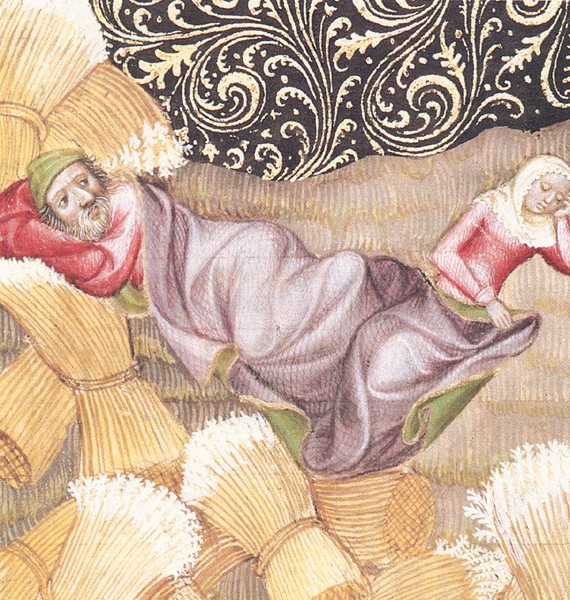
Bundled together like sheaves of grain, Boaz and Ruth share a blanket, symbolic of espousal, in this 14th-century illustration from the Wenzel Bible. Photo: Austrian National Library, Vienna.
The matter is soon settled. When Boaz and the eligible kinsman meet at the city gate, the other man says to Boaz, “You take over my right of redemption, for I am unable to exercise it” (Ruth 4:6). And as was the custom in Israel, Boaz takes off his sandal to validate the transaction of his becoming redeemer and says to the witnesses:

The child Obed is shown in this decorative letter, in the arms of either Ruth or Naomi. Photo: Bayerische Staatsbibliothek, Munchen.
So they were married and had a son, Obed, who “was the father of Jesse, father of David” (Ruth 4:17).
That the Book of Ruth is read in the synagogue on the festival of Shavuot , which commemorates the giving of the Torah (the Five Books of Moses), alerts us to the book’s possible connections with the Torah. But alas, both the usual explanation (that Shavuot celebrates the spring grain harvest, which forms the setting for the book) and various lesser-known explanations (that David, a great-grandson of Ruth, died on Shavuot or that Ruth’s loyalty to Naomi symbolizes Israel’s loyalty to the Torah) touch only upon superficial connections or are clearly midrashic 1 efforts to forge a connection.
I propose a much more fundamental and far-reaching link between Ruth and the Torah—indeed, with the entire Bible—a link that goes to the very heart of the overarching theme of the Bible.
The theme that unites the books from Genesis through Kings and informs much of the Prophets and the Writings is the land and the people. God’s covenant with Abraham lies at its heart. God says to Abraham:
The early chapters of Genesis are a prologue to this covenant, describing the creation of all the land in the world and of all of its peoples, until the narrative focuses on one particular family: Abraham’s. The rest of Genesis concentrates on the growth of this family (the “people”) as they move from Haran to Canaan , to the Negev , to Egypt , to Hebron , to Dan and to Beersheba . By the end of Genesis the extensive family is settled in Egypt.
Abraham’s family is first called a people in Exodus: A “new king arose over Egypt,” and he said: “‘Look, the Israelite people ( am bnei yisrael ) are much too numerous for us’” (Exodus 1:8, 9).
The narrative from Exodus to Deuteronomy relates the return of this people from Egypt to the land they have been promised . The section known in Jewish tradition as the Former Prophets (Joshua, Judges, Samuel and Kings) details the vicissitudes of the people in the promised land, until, at the end of Kings, the Babylonian king Nebuchadnezzar conquers the territory of Judah and sends its people into exile. Ezra / Nehemiah recount the people’s return to the land and the restoration of the community in it.
Read more about women in the Bible, including Lilith, Jezebel , Judith, and Lydia and Tabitha .
The Book of Ruth, too, is about exile and return, land and people. Like Abraham, and like the family of Jacob (see the story of Joseph ), the family of Elimelech was forced by famine to leave its home in the land of Israel and to preserve itself in a foreign land. When the famine abates, Naomi returns to Bethlehem. Far from being a casual move, the importance of returning is emphasized in chapter 1 by the repetition of the root shuv , “return,” twelve times as Naomi bids her daughters-in-law return to their families in Moab and as she returns to Judah with Ruth. Technically Ruth cannot return to Bethlehem, since the Moabite woman has never been there. Her return is really Naomi’s return; Ruth is known in Bethlehem as “the one who returned with Naomi” (Ruth 2:6).
Land plays a large role in the Book of Ruth. First, Ruth establishes a physical connection with her newly adopted land as she gleans in Boaz’s field. Second, and more complicated, Naomi offers for sale or redemption a parcel of land that once belonged to her husband, Elimelech.
This transaction raises legal questions, but more importantly, the proper inheritance of land has special significance in the Bible. Land was not to be alienated from its original owner or from his descendants. This principle lies behind many of the Bible’s laws and narratives—from the division of property between Lot and Abraham, when Lot chooses the plain of the Jordan River and Abraham remains in the land of Canaan (Genesis 13:9–12); to the claims of the daughters of Tzelofchad, who gained the right to inherit the land when their father died without sons (Numbers 27); to the laws of the jubilee years when the land returns to its original owner (Leviticus 25); and to the judgment that falls on King Ahab and Queen Jezebel for having Nabot killed so they could get his vineyard (1 Kings 21).
Central to the Book of Ruth is the institution of the goel , the “redeemer” whose duty, according to Leviticus 25:25, is to buy back any land sold by his kinsman out of economic necessity. Seen against this background, the references to land in the Book of Ruth not only provide the setting for a pastoral romance, they also link the story to the covenant theme of land—whether private or national.
However, the family and people part of the covenant theme is more prominent than the land part in the Book of Ruth. At first it would seem that the ties that bind Naomi, Ruth and Orpah after the deaths of their husbands do not make them a family in any customary sense. They have no legal obligation to one another and can offer each other no mutual protection or support. More to the point, none of them seems to be able to restore the family by producing an heir. It is therefore entirely appropriate that Orpah accedes to Naomi’s suggestion that she remain in Moab with her parental family. Ruth’s response is extraordinary, for she is under no obligation to care for Naomi, just as Naomi, with her own extraordinary response, is under no obligation to provide for Ruth. Ruth’s poetic words, “Wherever you go, I will go, wherever you lodge, I will lodge,” are rightly famous, both for their beauty of expression and for their sentiment. “Your people shall be my people, and your God my God” is a radical thought because it signals that Ruth is changing her identity in a world where that was almost inconceivable. The ancient world had no mechanism for religious conversion or change of citizenship; the very notion was unthinkable. Religion and peoplehood defined one’s ethnic identity, and this could no more be changed than the color of one’s skin. A Moabite was always a Moabite, wherever he or she lived. And indeed, Ruth is referred to throughout the story as “the Moabitess.” But from Ruth’s point of view, she is becoming an Israelite. She is joining herself to Naomi not only on the private family level, but also on the national peoplehood level.
In this coming together of family and peoplehood, we are again reminded of the stories of the patriarchs, in which the family represents the people. In the patriarchal stories the main concern was the establishment of the family line—the quest for an heir whom God will designate as the one through whom the people of Israel will be born. The amazing thing about these accounts is that, although lineage is defined through the males, it is the women who take responsibility for the continuity of the family and the guardianship of its lineage. It is the women, often despite their husbands, who ensure the birth of the next generation and who direct the proper line of inheritance. Sarah, at first barren, provides a surrogate mother (Hagar) for Abraham, and later, when she bears her own son, Isaac, sees to it, with God’s approval, that he—not Ishmael—is the designated heir. Isaac’s wife Rebekah also guides the line of descent away from Esau and toward Jacob, as God had wanted. In the stories of Jacob’s wives, Leah and Rachel, the issue is no longer which son will be the heir, for they are all “the children of Israel.” Rather, the emphasis is on the accumulation of progeny. Rachel, initially barren, is jealous of Leah’s ability to bear children and so supplies her maidservant Bilhah to Jacob for this purpose (as Sarah had done for Abraham). Leah, during a hiatus in her childbearing, does the same by giving her maidservant Zilpah to Jacob as a concubine. Leah and Rachel’s eagerness to bear children for Jacob is again emphasized when they argue over who shall use the aphrodisiac mandrakes found by Leah’s son (Genesis 30:14–16). In all, Leah and Rachel provide Jacob with 12 sons (and one daughter), who will in turn father the 12 tribes—the people of Israel.
Become a Member of Biblical Archaeology Society Now and Get More Than Half Off the Regular Price of the All-Access Pass!
Explore the world’s most intriguing biblical scholarship.
Dig into more than 9,000 articles in the Biblical Archaeology Society’s vast library plus much more with an All-Access pass.

Ruth’s explicit link to Rachel and Leah occurs in the blessing of the townspeople as they witness Boaz’s redemption of Ruth and of the land of Elimelech and Mahlon: “May the Lord make the woman who is coming into your house like Rachel and Leah, both of whom built up the House of Israel” (Ruth 4:11). In the blessing, the townspeople add a specific reference to Judah, the founder of Boaz’s tribe: “May your house be like the house of Perez whom Tamar bore to Judah” (Ruth 4:12).
The story of Tamar and Judah is also a story of family continuity achieved by the determination of a woman. Tamar bears twins, Perez and Zerah, after she masquerades as a prostitute to seduce her father-in-law, Judah, who had failed to fulfill his promise to give her his youngest son Shelah as a husband after his two older sons had died while married to her (Genesis 38).
The references in the Book of Ruth to Rachel, Leah and Tamar serve not only to welcome Ruth into the Judahite community by linking her with the mothers of that community, they especially lead us to view Ruth in the mold of the heroic women who ensured the preservation of the people of Israel. Thanks to Ruth, the family of Naomi (strangely, the text does not put it in terms of Elimelech or Mahlon) survives. The child born to Ruth and Boaz is “a son…born to Naomi” who will “renew her life.” For Naomi, Ruth is better than seven sons (Ruth 4:15), for she produces what Naomi’s sons failed to, an heir.
An heir implies an inheritance, and in the Bible that means land. At the end of the Book of Ruth, the themes of land and family come together. Boaz reunites the family with its land by redeeming Elimelech’s land and by marrying Ruth, the widow of Elimelech’s son, Mahlon. The story comes full circle: The family that left its land and had no descendants returns to its homeland and acquires an heir and a patrimony.
This would be uplifting even on the level of an individual family; but like the patriarchal stories, the Book of Ruth speaks to the national level as well. This is no anonymous family that is restored—this is the family into which King David will be born. Just as Ruth’s adoption of both Naomi’s people and God raises their return to Bethlehem from the personal to the national level, so the genealogies at the end of the book lift the story to the national level. One genealogy begins with Obed, son of Boaz and Ruth, and culminates three generations later in David; the second goes back to Perez, the son of Judah and Tamar , then leads to Salmon, father of Boaz, and after ten generations also culminates in David.
David, as Israel’s greatest king, founded the Davidic dynasty, the one to which God promised an eternal kingdom. David represents both the United Monarchy at its height and the promise of its eternal existence. The covenant with David, like the covenant with Abraham, is an emblem of God’s promise to Israel. The story of Ruth provides for David the same pattern that produced the patriarchal line and the line of Judah—namely, the perpetuation of the family through the deeds of women—and it thereby joins the covenant with David to the covenant with Abraham. The promise to Abraham of progeny and land is renewed in the promise to David of the dynasty and the kingdom. The theme of family continuity becomes the theme of national continuity. The Book of Ruth is the bridge between the era of Israel as family or tribe and Israel as nation. Far from being peripheral to the main narrative sequence of the Bible, Ruth dramatizes its principal theme: the continuity of this people in their land.
Adapted from Reading Ruth, edited by Judith Kates and Gail Reimer (©1994), Ballantine Books, a division of Random House.
“Ruth—Big Theme, Little Book” by Adele Berlin originally appeared in Bible Review , August 1996.
Adele Berlin was the Robert H. Smith Professor of Hebrew Bible at the University of Maryland before retiring. A groundbreaking literary critic, her 1994 book Poetics and Interpretation in Biblical Narrative is a seminal text. She is one of the few women to serve as the President of the Society of Biblical Literature. Her many publications include Zephaniah (Doubleday, 1991), Biblical Poetry Through Medieval Jewish Eyes (Indiana Univ. Press, 1991) and The JPS Commentary: Esther (Jewish Publication Society, 2001).
1. Midrashic interpretation departs from the plain sense or context of a Bible passage in order to fill in gaps, forge links with other parts of the Bible, or teach ethical and religious values.
Read more in Bible History Daily;
Bible Women
Women in the Bible
Scandalous Women in the Bible
Related Posts

Pharaoh’s Brick Makers
By: Marek Dospěl
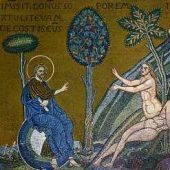
The Adam and Eve Story: Eve Came From Where?
By: Biblical Archaeology Society Staff
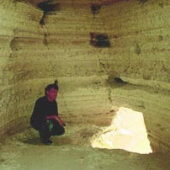
The Masoretic Text and the Dead Sea Scrolls
By: BAS Staff

Who Was Moses? Was He More than an Exodus Hero?
11 responses.
The article appears to overlook the redemptive indicators in the book of Ruth, and as for not recognizing the well established interlocking connection to Hebrew Bible as if the author suddenly doscovered this is a glaring ‘announcement’ of inadequate scholarship. Additionally there is no attempt, deliberate or otherwise, to link the concept of redeeming with the Messiah. An easily researchable task through simply following the lineage of David and the inclusion of Ruth in the genealogy of Christ in Matthew’s Gospel. A not so scholarly article..
LOL. Like the Church, Ruth went with her mother in law, representing Israel, when she had nothing left to lose no husband, no kids. Naomi at least had kinsman and suddenly Naomis God is Ruths God, Naomis people, her people? I see this so called Church down on its luck do to its worship of a failed messiah who had nothing left to lose but to glaum on to the one nation that still had the grace of God on it. The fact that she had to tell Naomi that Naomis God would be her God only shows that the Church sees its failure in believing in the executed messiah and finally agrees to accept the true God on his terms, with no intercession. Before that Yaweh was probably part of Ruths ovreall Pantheon of Gods, a Trinity or more of Gods. Now this story reveals the bankruptcy of the Church and its need to give up and follow Israels lead, not some would be Messiah.
Ruth’s story is one that both Christians and Jews alike can celebrate. It’s a beautiful story of redemption and grace. The story opens with Naomi’s clan having left the land of promise, and their faith, for a new life in the land of Moab, apart from God. When the men of the clan die and are survived only by Naomi and her two Moabite daughters in law, Naomi determines to return to the land of Israel, a broken women and only enough faith to make the trip..
In the course of the story Ruth determines to abandon her Moabite identity and attached herself to Naomi’s fate. When they return they find the God of Abraham, Isaac and Jacob welcomes them both with open arms. through the grace extended by the community of faith, and God’s provision of a Kinsman Redeemer, God’s grace redeems all that was lost to unbelief, when Ruth marries Boaz. King David is a descendant of their offspring.
Jesus Christ “the executed messiah” came through the David line as required by Biblical prophecy. You’re right in observing that he was executed, but you left off the rest of the story. There’s no grave containing his body. I’d invite you to research this for yourself and experience the grace Naomi and Ruth shared with us through this story.
I saw this as the relationship we have with God the Father, the Holy Spirit and Jesus . he will never leave us or forsake us. He would have know man to perish know matter what the circumstance is or who you are. He taken the foolish things to confound the wise. You can only see this through “Revelatory” knowledge given by the Holy Spirit, wow, wow seeing through the eyes of the Holy Spirit prophetically. I saw what you said, your interpretation was so profound. Amen to God be the Glory!
A further interesting point to the story it that Ruth, as a Moabitess, belonged the people founded by Moab: the son of Lot’s eldest daughter by her father (Gen 19:37). This was a people unacceptable in the God’s congregation even to the tenth generation, indeed, forever (Deut 23:3)–with no over-riding provision for proselytes or by gender; yet our Lord Jesus was born of a descendent of Ruth (Isa 11:1; Micah 5:2; Luke 1:26-35). For me this circumstance reinforces the message of Christ that what is in an individual’s heart is what counts–what had always counted, but the Law and its observance had been intended to maintain a close relationship between God and his Chosen People until the coming of Jesus and the new, simpler, covenant.
Not only that it also opens up the reality that Jesus not only came to redeem the chosen ones but also the gentiles who like Ruth left her old gods and identity for a new identity in Christ, the executed messiah!!
I thought according to the Hebrew the phase “uncovered his feet meant something more salacious. See Jennifer Knust Unprotected Texts, p.36.
Undoubtedly, the land/family motif helps to explain why the author emphasizes certain details and ties the story to the Torah and rest of the Old Testament. However, from a Christian perspective, the story can also be seen as a type whose anti-type is the story of redemption of humanity through the Messiah. The whole theme is that of the need of redemption of those unable to rescue themselves by a kinsman redeemer. In Bethlehem, the story begins with the barley harvest (Passover) and concludes at the wheat harvest (Pentecost/Shavuos). The characters in this story are the family from whom King David, and ultimately, the Messiah will come. The gentile women in Jesus’ ancestry are explicitly brought out by the Gospel writers and demonstrate how foreigners are “grafted in” to the native family tree of Israel. And there are other parallels which can be pointed out.
Loved it so much. Great insight in the sacred scripture. As a Christian we see in Ruth the coming of the church, the gentiles as part of the people of God. Paul in the book of Gslatians calling the reconciliation of the two ( the Jews and the gentiles) to become one.
Write a Reply or Comment Cancel reply
Your email address will not be published. Required fields are marked *
Recent Blog Posts

Where Is Golgotha, Where Jesus Was Crucified?

How Large Was King David’s Jerusalem?

Hanging Gardens of Babylon … in Assyrian Nineveh
Must-read free ebooks.
50 Real People In the Bible Chart
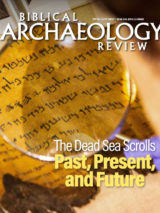
The Dead Sea Scrolls: Past, Present, and Future

Biblical Peoples—The World of Ancient Israel

Who Was Jesus? Exploring the History of Jesus’ Life
Want more bible history.
Sign up to receive our email newsletter and never miss an update.
By submitting above, you agree to our privacy policy .
All-Access Pass
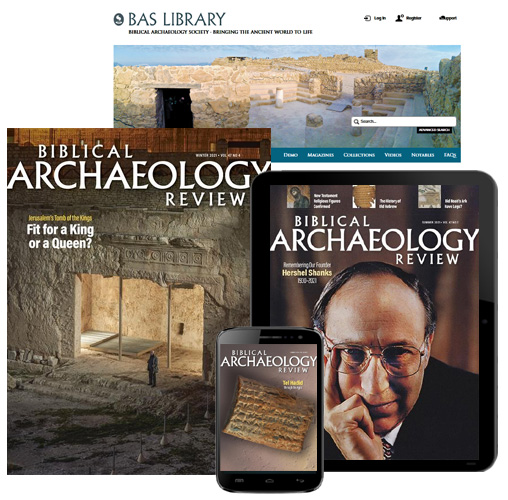
Dig into the world of Bible history with a BAS All-Access membership. Biblical Archaeology Review in print. AND online access to the treasure trove of articles, books, and videos of the BAS Library. AND free Scholar Series lectures online. AND member discounts for BAS travel and live online events.
Signup for Bible History Daily to get updates!
Signup to receive the Ruth Devotional
Signing up for the Ruth devotional also subscribes you to my emailing list.
Thank you for subscribing!
Send me the devotional!
This seven day Ruth devotional is designed to take you on a journey. Join Ruth and Naomi as they wander through hardship and difficulties. This is a story of redemption and rescue. I pray as you journey through the book of Ruth, your final destination will be closer to your Creator.
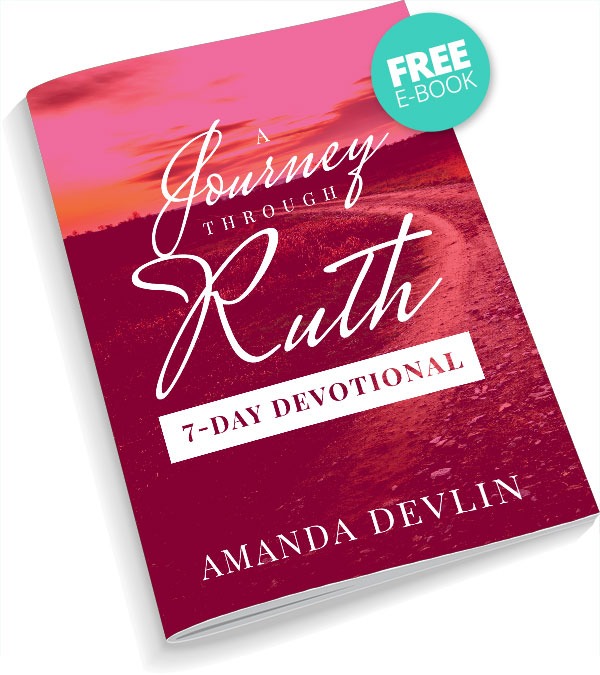
- https://www.facebook.com/amandamdevlin/
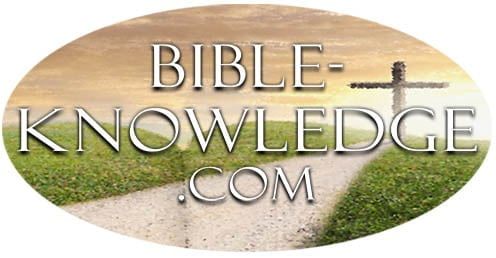
7 Powerful Lessons We Can Learn from the Story of Ruth
By: Author Joy Burgess
Posted on Last updated: August 8, 2023
There are only two books of the Bible named after women: Esther and Ruth. Ruth is also one of the few women who are mentioned in the genealogy of Jesus found in the book of Matthew. And this was in a time when women weren’t ordinarily included in genealogies.
The book of Ruth is a beautiful piece of sacred literature, applauded by many for its literary excellence. And the story – it’s an important one. A simple Moabite widow becomes an essential character in the powerful story of salvation woven through the Bible.
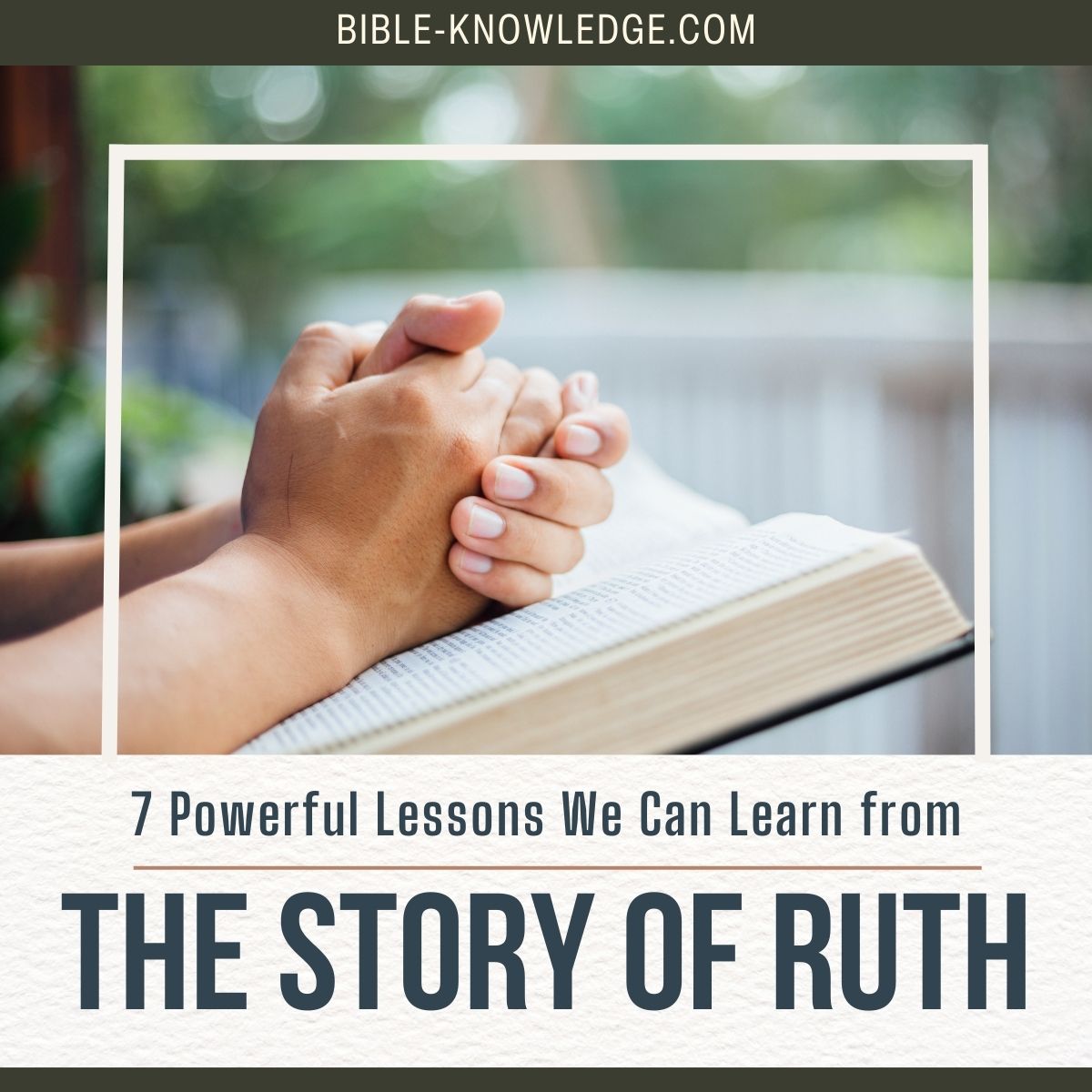
As a widow myself, I’m drawn to the story of Ruth again and again. A famine in Canaan forces Elimelech and Naomi, along with their sons, to migrate from Bethlehem to Moab. Their sons marry Moabite women, Orpah and Ruth. Elimelech passes away, and about 10 years later, both of Naomi’s sons die, as well. Naomi, Ruth, and Orpah are all widows.
The world is not kind to widows today, and being a widow was even more difficult back then. In fact, Naomi encourages both girls to go back to their parents and find husbands who can take care of them. Ruth refuses with a passionate speech to Naomi:
Entreat me not to leave thee, or to return from following after thee: for whither thou goest, I will go; and where thou lodgest, I will lodge: thy people shall be my people, and thy God my God; Where thou diest, will I die, and there will I be buried: the Lord do so to me, and more also, if ought but death part thee and me.” (Ruth 1: 16,17 KJV)
So, Ruth and Naomi both return to Bethlehem. They have nothing, so Ruth goes to work in the grain fields so they have enough food to eat. It’s there that she meets Boaz, who also turns out to be her “redeemer.” After Boaz secures his place as her redeemer, the two are married and are later blessed with a son named Obed – the grandfather of King David.
Ruth’s story is ordinary. Perhaps that’s what makes it so compelling. She doesn’t come from a famous family. She doesn’t have great riches or great position. Ruth is just a widow – one from an enemy nation, at that. Nothing is going in her favor, but she’s brave, and her faith never wavers. And yet the life of a foreign widow who has nothing becomes so important that it’s included in the Bible and her name recognized in the lineage of Jesus.
As you read through the book of Ruth, you won’t find any places where God’s voice thunders down to her as you might in other Bible stories. No earth-shattering miracles, like the Red Sea parting, happen in her life. But what you do see is an ordinary – and challenging – life shaped by faith and guided by the God she believes in, and today we can look back and see the mighty way her life was used.
While there are many things to learn from the story of Ruth, here are seven powerful lessons from this tiny book that stood out to me.
Lesson #1 – There is Hope Even in the Most Devastating Times of Our Life
The book of Ruth begins by looking at the life of Naomi. After moving to Moab with her husband and sons, she loses her husband and becomes a widow. Just 10 years later her sons die, too. It seems that Naomi’s entire life crumbles in those years. In fact, when she returns to Bethlehem, she tells everyone:
…Call me not Naomi, call me Mara: for the Almighty hath dealt very bitterly with me. I went out full, and the Lord hath brought me home again empty.” (Ruth 1:20,21a KJV)
It’s crushing to lose a spouse. It’s heart-wrenching to lose a child. And Ruth, she also lost her husband. She left behind her family to go with Naomi back to Bethlehem. When these two women arrive back in Naomi’s home town, they are destitute, devastated, and broken. Neither of them knew how they’d survive. But both of them had faith that somehow things would work out. They had hope for their future.
Naomi already felt that God had “dealt very bitterly” with her, yet she continued to hope. Ruth laid aside her pain, left her home and family, and turned her face to the future with hope as she journeyed to a new place with her mother-in-law. Both of these women showed faith and clung to the belief that better days were ahead.
When life brings devastation, it’s not easy to hope. It’s hard to have faith. But when things are the most difficult, that’s when we need faith and hope the most. In the moments where life feels like it’s crushing you, start with a little faith. Hebrews 11:1 reminds us that “Now faith is the substance of things hoped for, the evidence of things not seen.” And looking at the book of Ruth, we can see that even when we can’t see beyond our pain to his plan, we can have hope that our story isn’t over – better days are coming.
Lesson #2 – The Past is Not Our Final Destination When We Trust God
At the very beginning of the book of Ruth, she’s living in Moab, her home nation. Moab was a place that most Israelites didn’t like. It was an enemy nation, and Israelites tended to look down on the Moabites. On top of that, she was a widow, she was childless, and she lived with her mother-in-law.
That journey to Israel must have been frightening. She made a choice to stay with Naomi and help her, all the while knowing that she was going to a country that wouldn’t like her very much. Her country of origin already made her an outcast, and being a childless widow gave her plenty of reason to shrink back into a shell and simply live her life in obscurity.
But that’s not what she did. She declared that she was going with Naomi to Bethlehem, left her country and her family behind, and refused to let her past hold her back. She chose to serve the God of Naomi, and she believed there was still life left for her to live.
No matter your past, you still have a purpose. Your past is not your final destination when you make a choice in faith. While your confidence may be wavering, God’s promises are not.
Lesson #3 – Doing the Right Thing Often Takes Great Sacrifice
Doing the right thing isn’t always easy. In fact, it often takes great sacrifice. Naomi reminded Ruth that she was free to leave and go back to her family. She was free to go back to her gods and free to search for a new husband to take care of her. But even when her sister-in-law chose to go back, Ruth made a different decision.
Ruth chose to go with her mother-in-law, showing not only how dedicated she was to Naomi, but also her dedication to the God of Israel. In that instant, she decided, “…Thy people shall be my people, and thy God my God.”
It was a sacrifice for Ruth to refuse to return to her family. Her commitment to journey on with Naomi was a beautiful, selfless act, and a stunning example of the love of Christ – the same Christ who would be of her bloodline years later.
Lesson #4 – Sharing Openly About Our Relationship with God Brings Intimacy to Relationships
The story of Naomi and Ruth are woven together closely that their stories are nearly inseparable. In fact, we know more about the relationship between these two women than we know about them individually. Their relationship offers a beautiful model of a good relationship – a stunning look at a blending of lives.
The two women shared great sorrow, but they also shared great affection for one another. We also see the freedom in their relationship. Naomi loved Ruth, but she was willing to let her go back to her family. But it was Ruth’s love for Naomi that made her willing to leave her country to return to Israel. Even though Naomi knew that a new marriage for Ruth would change their relationship, she still played an important part in arranging the marriage of Boaz and Ruth.
It was their faith that was at the center of their relationship and intimate communication. Through Naomi, Ruth learned about the God of Israel and chose to put her trust in him. Naomi’s ability to be open and honest with Ruth about her relationship with God is inspiring.
We often feel like we need to keep our questions and thoughts about God to ourselves within a relationship. We don’t usually share our unedited feelings and thoughts about God with friends or family members. Sometimes we’re afraid that sharing our questions and doubts and disappointments will turn other people away from God, when actually, sharing about our relationship with God openly can bring more intimacy to our relationships and help draw other people to their own faith.
Naomi was open with Ruth about the joy, the fear, the pain, and the anguish that came with her faith in God. She admitted that she felt that God had dealt with her bitterly. And yet it was that sharing and intimacy that was the foundation of the deep relationship these two women shared.
Lesson #5 – We See a Preview of Christ’s Redeeming Power
Throughout the Bible, we see previews of Christ. In the book of Ruth, we see Boaz as a “type” of Christ – he’s the “redeemer” of Ruth. These previews of Christ are a bit of a “foreshadowing” that falls across Old Testament pages, fully coming to reality in the New Testament with the birth of Jesus.
Both Ruth and Naomi mention Boaz as a “kinsman.” In Hebrew, the word used is “goel,” which refers to a kinsman who has the “right to redeem” or a “redeemer.”
Throughout the Bible, we see that same Hebrew word used several times. In the book of Job, Job declares, “I know that my Redeemer [goel] lives.” While Boaz was a “kinsman redeemer,” when Jesus comes to earth as a man, he becomes our “kinsman redeemer” in the flesh, and Hebrews 2:11 it says that he is “not ashamed to call them brethren.”
Boaz redeemed Ruth, but years later Jesus would become the “redeemer” for mankind. When John the Baptist was born, Zacharias was speaking in the future about the work of Christ, announcing:
Blessed be the Lord God of Israel; for he hath visited and redeemed his people.” (Luke 1:68)
Lesson #6 – We Must Be People of Character Even When We Think No One is Watching
Character – it’s who you really are when no one else is watching. Ruth had no idea that millions of people would read her story. She lived a simple live in obscurity. Yet she showed incredible character. Even Boaz makes mention of her character:
…It hath fully been shewed me, all that thou hast done unto thy mother in law since the death of thine husband: and how thou hast left thy father and thy mother, and the land of thy nativity, and art come unto a people which thou knewest not heretofore…Blessed be thou of the Lord, my daughter; for thou hast shewed more kindness in the latter end than at the beginning, inasmuch as thou followedst not young men, whether poor or rich. And now, my daughter, fear not; I will do to thee all that thou requirest: for all the city of my people doth know that thou art a virtuous woman.” (Ruth 2:11, Ruth 3:10,11 KJV)
Ruth went above and beyond in the way she honored and respected her mother-in-law, and in doing so became known in the entire city as a “virtuous woman.” She worked hard to provide food for her and her mother-in-law. Everything that she did showed her character, and because of that character, she was honored by God. Like Ruth, we also need to work to be women and men of integrity.
Lesson #7 – God Uses Unlikely People for His Purpose
Ruth was a poor, hurting, outcast, widow. She grew up in an evil country – an enemy of Israel. She was childless. She moved to a foreign land where she knew no one but her mother-in-law. They struggled with poverty. She had to go gather behind the harvesters in the fields to get a bit of barley so they could survive. Anyone who looked at this foreign widow would have never guessed that God would choose her bloodline for the line of the promised redeemer – Jesus.
Through Ruth’s story, we learn that God uses the most unlikely people for his purpose. Just look at the five women mentioned in the genealogy of Jesus: Tamar, Rahab, Ruth, Bathsheba, and Mary. Tamar resorted to trickery to bear a son. Rahab was a prostitute whose faith saved her from the crashing walls of Jericho. Ruth was a Moabite and a widow. Bathsheba (referred to as Uriah’s wife in the genealogy of Jesus) only became David’s wife after David took her for himself and killed her husband. Mary was a young virgin who was already engaged to Joseph when she became pregnant with Jesus, and she showed great courage in her willingness to bear the scorn and shame that came with a pregnancy that occurred before marriage.
Ruth reminds us that no matter what lies in our past, and no matter how difficult our circumstances may be, a little bit of faith makes a huge difference. And even in our obscurity, and in the mess of what may be our lives, God finds a way to use the most unlikely people in ways that we could never imagine.
Nora Lizarondo’
Thursday 18th of April 2024
So powerful MESSEGE!
As it is the timely message for me now because of what’s happening now in our ministry!
Friday 8th of March 2024
Amen....one of the inspiring lesson l also learned is not going back ..let's take a look when Ruth was told to go back by Naomi ,she refused though she didn't have enough knowledge of where she was going but she was determined to move forward and not to turn back from where she had come from .. sometimes our descions determines our destinys we just need to be determined to move forward even though we don't have any knowledge of what will happen next but through it all Christ will arise and everything will work out for our own good.....be blessed
Julien Buenavides
Monday 11th of December 2023
On the day my husband died, the fear of being a widow has come. But because God is so faithful to me, I became more courageous to face the challenges of being a single mom to my 3 kids. Never in my life that I thought of finding someone to love me again but God is so gracious enough. I can't comprehend how God uses people to be a blessing to others.
The story of Ruth is one of my favorites in the Bible. Maybe because it relates to my life or because I experienced how God moved to the life of Ruth as God did to me. Indeed, God is the same yesterday, today and tomorrow.
Once again, thanks for this story, may God bless us all.
Adebayo Adeyemi
Saturday 4th of November 2023
Highly illuminating and educative. These seven lessons are very important in the life of every christian.
Faith Gatwiri
Sunday 10th of September 2023
Have learnt that a little bit of faith makes a huge difference no matter what we are going through. Lastly there is greater blessing in serving people with all your heart.

The Story of Ruth in the Bible: A Tale of Loyalty and Redemption
- January 20, 2024

Historical Context and Genealogy
Before you explore the poignant narrative of Ruth, it’s essential to grasp the backdrop of its occurrence and the ensuing lineage that bears significance to Judeo-Christian heritage.
The Time of the Judges
The Book of Ruth is set during the tumultuous era of the Judges , a period described in the Hebrew Bible as a time when “there was no king in Israel; everyone did what was right in his own eyes” ( Judges 17:6 ).
It was a time marked by both moral ambiguity and a cycle of national sin, oppression, and deliverance.
This historical era provides the backdrop to Ruth’s story, positioning her tale in a context of societal instability and divine providence.
The Lineage of David
Ruth, a Moabite woman , becomes an ancestor of King David , after her display of unwavering loyalty to Naomi, her Israelite mother-in-law.
Your understanding of Ruth’s personal history is deepened when you consider that she is listed in the genealogy of David , a pivotal figure in Jewish and Christian traditions, outlined in the Gospel according to Matthew.
Through her marriage to Boaz, Ruth is woven into the lineage leading up to David and, by Christian belief, to Jesus Christ himself.
This genealogical connection can be found in the latter part of the Book of Ruth ( Ruth 4:17-22 ) and is expounded upon in other texts such as Ezra and Nehemiah , highlighting the integrative narrative of Hebrew history.
Ruth’s story is not just a personal journey but part of the foundational fabric of the line from which David and consequently the Messiah, as prophesied, arise.
Ruth’s Journey and Loyalty
Your exploration into the Biblical narrative of Ruth reveals a heartfelt journey underscored by unwavering loyalty.
This section brings to light Ruth’s dedication to her mother-in-law Naomi, and their collective journey from the land of Moab back to Bethlehem amidst a dire famine.
Ruth’s Dedication to Naomi
When faced with the death of her husband and the overwhelming grief of her mother-in-law, Naomi, your recognition of Ruth’s devotion becomes apparent.
Choosing to stay with Naomi rather than returning to her own family in Moab, Ruth embodies selflessness and devotion .
She utters the poignant words, “ Where you go I will go, and where you stay I will stay.
Your people will be my people and your God my God ” ( Ruth’s story of loyalty ), setting a powerful example of steadfast commitment .
The Journey from Moab to Bethlehem
Famine had driven Naomi’s family to Moab, but upon hearing of improved conditions in her homeland, the decision to return was made.
Ruth, embracing a profound sense of loyalty , forsakes her native land and joins Naomi on the perilous journey back to Bethlehem.
This act is not merely a change in land , but a testament of unwavering faith and dedication to Naomi’s family, and ultimately to God.
Ruth’s journey from Moab would lead her to become an integral part of a greater redemption story, marking her as a figure of hope and fidelity within your religious heritage.
Cultural and Religious Practices

Your exploration of the story of Ruth in the Bible offers a distinctive glimpse into the cultural and religious practices of the time.
Anchored in the fabric of ancient Israelite society, these practices highlight the importance of traditions such as gleaning and the observance of Levitical laws central to the narrative.
Gleaning in the Fields
When you revisit the story of Ruth, you will witness the practice of gleaning , a form of social welfare commanded by the Torah.
During the harvest period, landowners were required to leave the corners of their fields unharvested and allow the poor to harvest (Leviticus 19:9-10).
This not only provided sustenance but also preserved dignity and community cohesion.
- Barley Harvest : The period when Ruth gleaned in the fields to support herself and Naomi.

Levitical Laws and Redemption
The Torah established laws detailing redemption that Ruth’s story exemplifies.
A central concept is the role of a ‘kinsman redeemer,’ a relative who would ensure the continuity of family lineage by marrying a widow, as Boaz did for Ruth.
- Leviticus : The book of the Torah where redemption and family lineage laws are delineated.
- Covenant : Such laws were seen as covenantal obligations, binding individuals and communities to a set of sacred traditions and customs.
By understanding these practices, you grasp the profound respect for the customs and laws they held, which still resonates in Jewish tradition to this day.
Ruth and Boaz’s Relationship

In the heart of the narrative of Ruth, you find a testament of loyalty and divine provision through Ruth and Boaz’s relationship .
As you explore their connection, note how it beautifully exemplifies the principles of redemption and integration into a faith community.
Boaz as the Redeemer
Boaz , a man of wealth and influence in Judah , comes forth as a kinsman-redeemer to Ruth , the Moabite widow.
Under the laws of the time, as a close relative to Ruth’s deceased husband, Boaz has the privilege and obligation to redeem Ruth to ensure the survival of her husband’s name and lineage.
Your understanding of ‘redeemer’ in this context is crucial, as it signifies not just a rescuer, but one who restores rights and brings back into community.
When Ruth approaches Boaz, she does so humbly, yet with courage, invoking this role of kinsman-redeemer.
Boaz, touched by Ruth’s loyalty to her mother-in-law Naomi and impressed by her reputation, agrees to take on this role.
He ensures Ruth’s protection and provision, first as a benefactor and soon as a redeemer.
Your perspective on this action may see it as symbolic, heralding Boaz’s integrity and adherence to Israelite customs and laws.
Marriage and Integration into Israel
The marriage of Ruth and Boaz is a heartfelt one, founded on love and mutual respect.
It also serves the practical purpose of integrating Ruth, an outsider, into the community of Israel.
The union is celebrated and blessed by the townspeople, who pray for the couple to be fruitful and for their lineage to be as honorable as that of Rachel and Leah, the matriarchs of Israel .
Through her marriage to Boaz, Ruth transitions from a vulnerable widow to a respected member of the Israelite community.
Your reflection on this story may recognize it as a narrative of hope, showing that even the most dire circumstances can be turned around through faith and righteous action.
Ruth’s unwavering dedication to Naomi, together with Boaz’s empathy and benevolence, reinforce the redeeming power of love and faithfulness within their shared tradition.
The Legacy of Ruth in Christianity

In your exploration of Ruth’s impact on Christianity, you encounter her remarkable embodiment of faith and her integral placement in Christian scripture.
Ruth as a Model of Faith and Righteousness
Ruth’s unwavering loyalty and kindness are exemplified by her decision to leave her homeland and accompany Naomi back to Bethlehem.
In the Book of Ruth within the Hebrew Bible , your encounter with Ruth’s character teaches you about steadfastness and virtuous conduct.
As you reflect on her actions, consider her act of gleaning in the fields—both a display of humility and an exercise in trusting God to provide.
Ruth in the Christian Canon
As the great-grandmother of King David, Ruth assumes a momentous role in the genealogy leading to the Messiah in Christian belief.
Her story, found in the Christian Old Testament, has been a touchstone for conversations about inclusion and divine providence.
It’s through Ruth’s lineage that Christians see the unfolding of a divine plan, culminating in the birth of Jesus, whom Christians revere as the Messiah.
Your understanding of faith within Christianity is thus enriched by the narrative of Ruth’s life and legacy.
You may also like

Parables Explained: Unveiling Timeless Spiritual Lessons
- January 16, 2024

Sexual Immorality: Is Society’s Perspective Shifting?
- December 19, 2023

What Does the Bible Say About Abortion? Understanding Scriptural Perspectives
Trusting God: A 3-Day Journey Through Ruth's Faith, Provision, and Purpose Sample
Day 1: Trusting God When the Odds Are Stacked Against You
Imagine being in a foreign land, far from home, with the weight of responsibility for your family's well-being on your shoulders. You're an outsider, a recent widow, with no one to rely on but your equally widowed mother-in-law. Sounds like a recipe for a tough time, right?
This is where Ruth finds herself in our passage today. Despite her social status as a Moabite (which didn't make her very popular in Bethlehem), she chose to trust God in the face of adversity. Boaz, a wealthy landowner, takes notice of her sacrifices and blesses her for her faithfulness. Through Boaz, God provides for Ruth and Naomi in ways they couldn't have imagined.
This passage serves as a reminder that God sees our struggles and rewards our faith and perseverance. Just as Ruth dared to trust God in her dire circumstances, we too can rely on God's promises of provision during our own rough patches.
- Think about a challenging situation in your life. Consider how you can trust God to provide for your needs.
- Look for opportunities to serve others in your community, and be open to God's unexpected provisions. Remember, God has a knack for using us to bless those in need, often in surprising ways.
- When you face challenges, turn to prayer, asking God to help you trust in His provision and grow in faith. Who knows, you might just find a Boaz in the most unexpected places!
Heavenly Father, I thank You for the example of Ruth, who trusted You even when it felt as though the entire world was against her. Help me to remember Your promise of provision and to trust in You when I face difficult situations. Give me the courage to step out in faith, knowing that You are always with me and that Your blessings often come disguised as unexpected turns in my journey.
In Jesus' name, I pray. Amen.
Matthew 6:25
Philippians 4:19
About this Plan
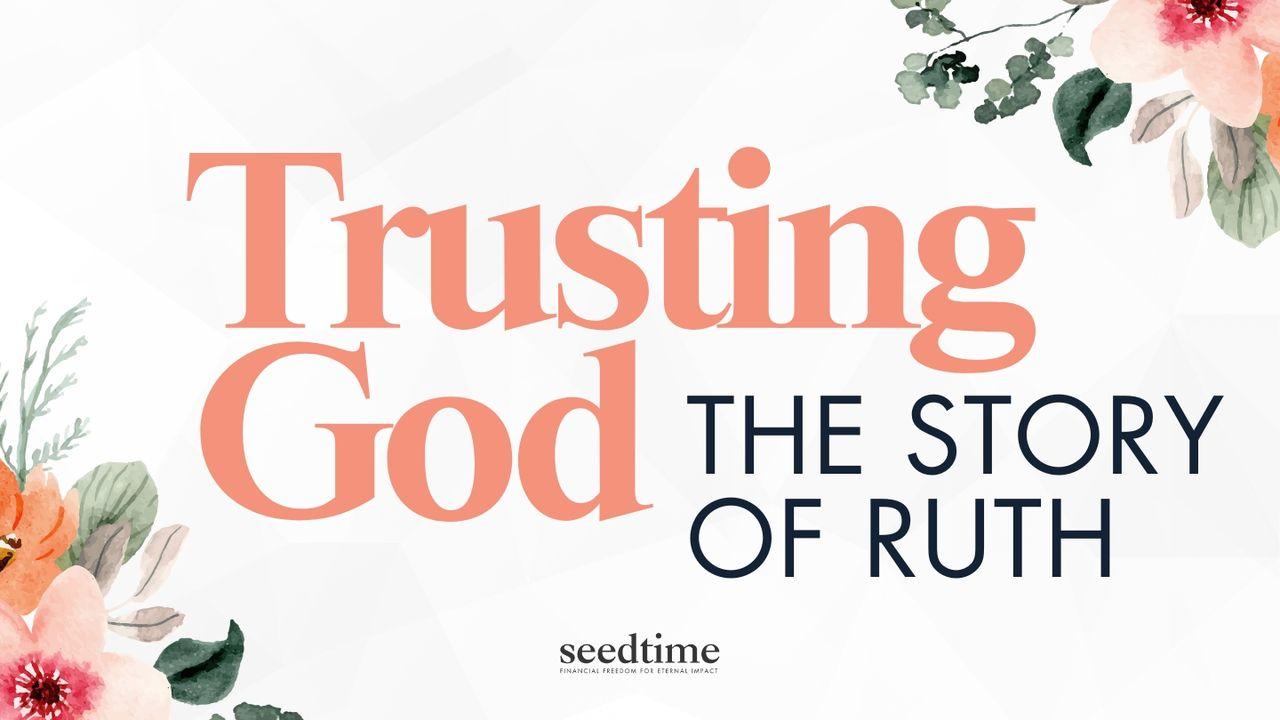
Explore Ruth's courageous journey as she trusts in God's provision amidst adversity and uncertainty. Through relatable reflections, discover how God works through others to provide for us, and learn to trust in His bigge ...
We would like to thank Bob Lotich for providing this plan. For more information, please visit: https://seedtime.com/ruth
Related Plans
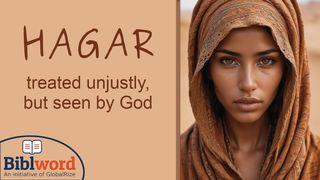
Hagar, Treated Unjustly but Seen by God

5 Good Mornings With Jesus
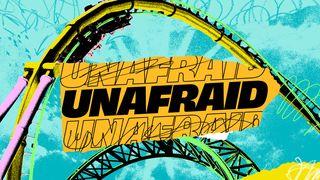
Seven Reasons to Not Fear

What's Next?
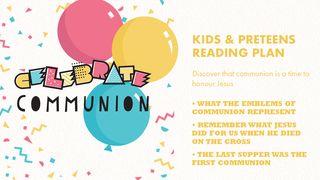
Celebrate Communion – a Time to Honour Jesus
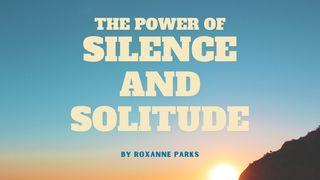
The Power in Silence and Solitude
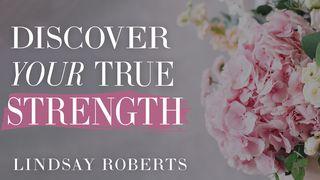
Discover Your True Strength
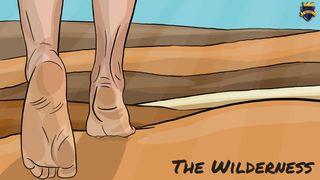
The Wilderness
YouVersion uses cookies to personalize your experience. By using our website, you accept our use of cookies as described in our Privacy Policy
- Why My Olive Tree?
- What Makes Our Olive Groves So Unique?
- Why Sponsor an Olive Tree in Israel?
- The United States and Israel
- How Israel Is Conserving Water and Improving the Environment
- Blessing Israel | Why Do Many Christians Support Israel?
- Jobs and Economic Growth in Israel
- How to Leave a Lasting Legacy in Israel
- Customer Login
- Wall of Honor
- (918) 615-9466
- Support the Golan Family
- Support Israel. Invest in Israel. Be a Part of the Restoration of Israel.
- Prophetic Fulfillment
- Economic Growth
- Remember a Loved One
- Commemorate
- Political Ties
- Holocaust Survivors
- Partnership
- Fundraising Opportunities
- Skip to primary navigation
- Skip to main content
- Skip to footer
Walking Through the Word: Ruth’s Journey
By My Olive Tree | May 23, 2022
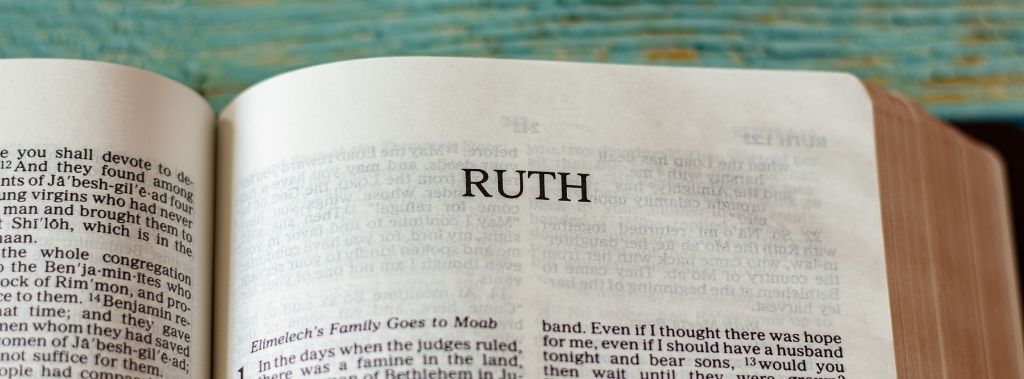
The Importance of the Story of Ruth
Ruth’s journey in the bible, what can we learn from ruth.
Ruth is an important biblical figure. But why is the book of Ruth read during Shavuot along with God’s laws? What connects her journey to such a holy, God-ordained time?
Join us as we explore the answers to these questions and discover how the story of Ruth continues to teach us today!
The book of Ruth is often read during the biblical holiday of Shavuot, along with the Law given to Moses on Mount Sinai. But why is that? How do the two connect to Shavuot?
The reading of the Law is fitting when we consider what Shavuot is. Shavuot, also known as the Feast of Weeks, is a harvest festival that celebrates what God has given. It causes us to recall God’s goodness, to give of that goodness to others, and as a result, to look back at God’s Word and the Law to remember what is expected of us.
Yet, what about the book of Ruth? This biblical book centers on a woman from Moab, believed through oral tradition, to be a high ranking Moabitess! Not only that, but there are many who say that Ruth was the granddaughter of Eglon, king of Moab. Eglon, being the grandson of King Balak, who had regrettable dealings with Moses; the same Moses who brought down the tablets of God’s Law from Mount Sinai! The very Law read over Shavuot! Which begs the question… why Ruth? Why the potential descendant of an enemy of the children of Israel?
Why would anyone choose to read the story of Ruth and follow her journey during one of the holiest celebrations of the year?
The answer lies in two primary focuses of the Shavuot celebrations:
First —A more modern-day reason is that the Jews, having not fully embraced the gift of God’s Law in the past, today put forth a special effort to be thankful for that gift. Ruth, therefore, being a Gentile who not only came to cherish the Law, but put it into practice so completely—altering every aspect of her life—is a wonderful example of joyfully embracing the laws the Jewish people now so cherish.
“…Boaz answered… ‘It has been fully reported to me, all that you have done for your mother-in-law since the death of your husband, and how you have left your father… mother and the land of your birth, and have come to a people whom you did not know before.’” —Ruth 2:11
Second —Shavuot was, and is, a holiday focused on harvest and firstfruits… of giving and reaping. Today this is largely recognized through the foods eaten, by bringing plants into the home, or by giving. Yet, harvest and firstfruits are still important to Shavuot, and the story of Ruth focuses on many points related to this theme…
“…anoint yourself, put on your best garment and go down to the threshing floor…” —Ruth 3:3
For instance, Shavuot commands that those in need are allowed to glean behind the harvesters and/or gather the outer edge of crops. In the book of Ruth we see that it was this very command of gleaning that brought Ruth into her future…
“…You are witnesses this day that I have bought all that was Elimelech’s… from the hand of Naomi. Moreover, Ruth the Moabitess… I have acquired as my wife… You are witnesses this day.” —Ruth 4:9-10
Beyond this, we see harvest-timed events throughout the book of Ruth. The most prominent being Ruth’s redemption by Boaz during Shavuot—eventually becoming the grandmother of King David, the great-grandmother of Solomon, and in the lineage of Jesus. Yet, these are not the only ones to be found in the book of Ruth…
Ruth is brought to our attention after she is widowed, when her security and hope were well tested… This is when the story of Ruth begins.
Having buried her husband, Mahlon, Ruth chose to follow her mother-in-law , Naomi, despite Naomi’s repeated attempts to have her turn back and return to her family. Yet Ruth, understanding honor, love, and God’s ways, refused to turn back, saying:
“…‘Entreat me not to leave you, or to turn back from following after you; for wherever you go, I will go; and wherever you lodge, I will lodge; your people shall be my people, and your God, my God. Where you die, I will die, and there will I be buried. The Lord do so to me, and more also, if anything but death parts you and me.’” —Ruth 1:16-17
With this initial meeting of Ruth and some of the first words she speaks, we learn of her determination, her love of Naomi, and of course, her love of God.
While this, in and of itself, is a lesson to us to love and follow after God, Ruth’s story progresses further…
No longer wishing to serve the false god she once did, and wanting to care for Naomi, Ruth followed her on what was likely only a one to two-week journey—yet, in her heart would have felt much longer, knowing she may never return.
This one decision to let love guide her actions meant she never saw her parents again… but her hope was not diminished. Her heart knew the glory of following God and of doing right by her mother-in-law who had lost her husband and sons—all her family in Moab. As far as we know, Ruth never regretted her decision. She never second guessed it.
The fact that Ruth does not complain or second guess her decision, even upon arriving in Bethlehem where she—a Moabitess—likely faced many hardships besides Naomi’s poverty, is beyond what flesh-filled logic might deem wise. Even Naomi’s own bitterness was not enough to dampen Ruth’s spirits!
Ruth took everything in stride. She did not try to have Naomi work or call upon her old friends and relatives for food. Instead, she eagerly went out into the fields to glean. She supported Naomi without ridicule or pride, working for the majority of the day in the hot sun.
It was Ruth’s lack of condemnation and a heart of love that first caught the attention of Boaz, the owner of the field she gleaned in and a relative to Naomi. Ruth did not shout out what she was doing for her mother-in-law, yet the tale of her kindness still reached Boaz. Her heart commanded attention.
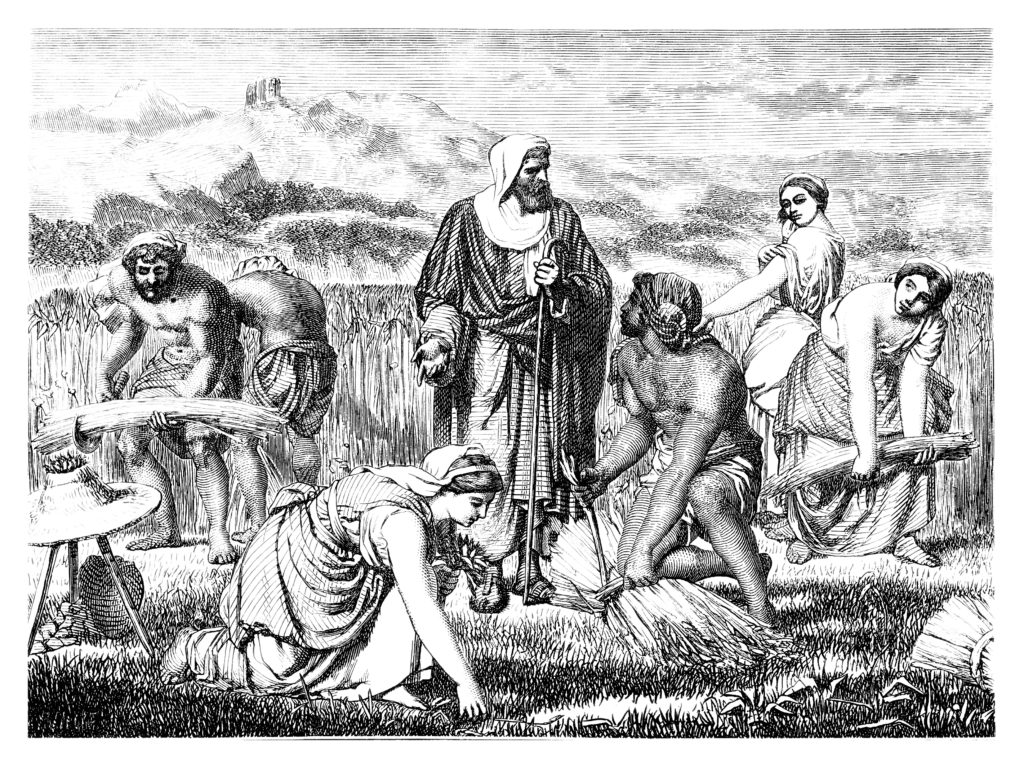
“And Boaz… said to her, ‘It has been fully reported to me, all that you have done for your mother-in-law since the death of your husband, and how you have left your father and your mother and the land of your birth, and have come to a people whom you did not know before. The Lord repay your work, and a full reward be given you by the Lord God of Israel, under whose wings you have come for refuge.’” —Ruth 2:11-12
Ruth found favor in the eyes of Boaz, and he ordered his men to leave extra stalks behind for her to glean and to allow her to drink the water they collected. Boaz also saw to it that she was fed and treated well while in his fields, and that no one chastised her.
Later, as the harvests neared their ends—approximately three months from when the gleaning first began—Ruth would again find favor…
For when Naomi instructed Ruth to go to the threshing floor at the end of Shavuot, Ruth listened, doing everything Naomi said; going to Boaz on the threshing floor after he ate and drank his fill, lying at his feet as he slept. When Boaz awoke, Ruth asked him to take her under his wing —she asked him to redeem her!
Yes, her mother-in-law Naomi had told her to go lay at Boaz’s feet… yet Ruth used the language of the Israelites. Ruth spoke in a way that Boaz might understand, choosing to honor Naomi by doing her will, rather than going to seek a younger or wealthier husband.
Because of her obedience and honor, Ruth found favor in the sight of Boaz. Yes, Boaz had to give first choice of acting as redeemer to a closer relative—due to the laws of the land—but it is likely that Boaz sensed how it would end. That his relative would choose to refuse, and that in turn he, Boaz, would receive Ruth. Boaz did not shy away from the task—not only because of Ruth’s relationship to Naomi, but because Ruth was a woman of character. A woman of God.
Therefore, when Boaz approached the nearer relation, he did not try to make Ruth sound more enticing. Boaz did not try to sway him to marry her, gladly doing so himself. Thus, Boaz redeemed Ruth, and she became his wife. Together they had a son named Obed, who would be the grandfather of King David —making thirty generations from Ruth to Jesus…
All this completing a story that in the natural would have felt an impossibility if told beforehand, yet was a Godly design of faith, hope, and love.
Ruth was a woman of good character. When Ruth asked Boaz to take her under his wing, he commented on how she was a virtuous woman . Not only that, but Boaz went further still, stating that all the people of his town knew it !
So what can we learn from the story of Ruth?
- We can learn that to be of good character, to be virtuous, is in part connected to how we treat others. Doing things not just for selfish reasons or gain, but out of love. Doing unto others as we would have them do unto us.
- We can learn that we reap what we sow. Ruth sowed love and kindness, therefore, she received that in turn. Yes, it directly ties to the fact that she was virtuous, but in it we are reminded that we have to sow to reap.
- We can learn the importance of patience and humility; for Ruth was patient and humble in everything she did. She was willing to travel a great distance from her home to make a new life with Naomi. She was willing to glean after the reapers for what should have been a pittance. And she was willing to wait for a God-given husband rather than any man who simply found her beautiful or was captivated by her good character.

So, how can we put the lessons of Ruth into practice?
In our day-to-day lives, we can turn to God for patience, love, and kindness… small, everyday lessons of the character God would have us embody. We can make choices which align with God’s heart and will for our lives and the lives of those we impact. We can adopt Godly habits and patterns; Godly character.
At My Olive Tree , through people like YOU, we are planting the land of Israel with olive trees and grape vines. By doing this, we are not only bringing the land of Israel to life , but we are showing the Father’s love to those who need it most. Giving jobs, hope, and love… in essence, acting as a Boaz to the people of Israel by not merely giving them food, but the tools and pride to gather their own. Let us in this hour show the good character of Ruth, planting seeds of love so that we too can reap a harvest… so that we might one day hear from our own Redeemer, well done my good and faithful servant.
Recent Posts

Proud to Stand in Solidarity With Israel

- 0 Shopping Cart

Ruth 1 – Ruth’s Journey
Audio for ruth 1:.
Ruth 1 – You Can Run, But You Can’t Hide
A. Background: Elimelech and his sons.
1. (1) a sojourn in moab..
Now it came to pass, in the days when the judges ruled, that there was a famine in the land. And a certain man of Bethlehem, Judah, went to dwell in the country of Moab, he and his wife and his two sons.
a. In the days when the Judges ruled : This account begins in the closing days of the Judges, a 400-year period of general anarchy and oppression when the Israelites were not ruled by kings, but by periodic deliverers whom God raised up when the nation sought Him again.
i. Notable among the Judges were Gideon, Samson, and Deborah. Each of these were raised up by God, not to rule as kings, but to lead Israel during a specific challenge, and then to go back to obscurity.
ii. The days when the Judges ruled were actually dark days for Israel; the period was characterized by the phrase everyone did what was right in his own eyes (Judges 17:6, 18:1, 19:1, and 21:25).
b. A certain man of Bethlehem : In these days, a man from Bethlehem left the land of Israel to sojourn in the country of Moab , because of famine. Bethlehem was a rich agricultural area (the city name means “House of Bread”), but times were tough, so he went to the pagan land of Moab.
i. To do so, he had to hike through the desolate Jericho pass, through the Judean wilderness near the Dead Sea, going across the Jordan River, into the land of Moab. This was a definite departure from the Promised Land of Israel, and a return towards the wilderness from which God had delivered Israel hundreds of years before. These were clearly steps in the wrong direction.
c. A famine in the land : God specifically promised there would always be plenty in the land if Israel was obedient. Therefore, a famine in the land meant that Israel, as a nation, was not obedient unto the LORD (Deuteronomy 11:13-17).
d. Went to sojourn : This means to leave with the intention to return. The next verse tells us the name of the man was Elimelech and his intention of a short visit turned into ten, tragedy-filled years – and Elimelech never returned to Israel. The name Elimelech means “God is king” – but he didn’t really live as if God was his king.
2. (2-5) Tragedy in Moab.
The name of the man was Elimelech, the name of his wife was Naomi, and the names of his two sons were Mahlon and Chilion; Ephrathites of Bethlehem, Judah. And they went to the country of Moab and remained there. Then Elimelech, Naomi’s husband, died; and she was left, and her two sons. Now they took wives of the women of Moab: the name of the one was Orpah, and the name of the other Ruth. And they dwelt there about ten years. Then both Mahlon and Chilion also died; so the woman survived her two sons and her husband.
a. Then Elimelech, Naomi’s husband, died : When Elimelech and his family came to Moab, they did not find life easier. Elimelech soon died, and his wife Naomi was left to care for their two boys, Mahlon and Chilion.
i. It is hard to say that this was the direct hand of God’s judgment against them. It is sometimes difficult to discern why tragic things happen. What is certain is that the change of scenery didn’t make things better.
ii. We sometimes think we can move away from our problems, but find we just bring them with us. No matter where you go, you bring yourself with you – so the same problems can continue in a different place.
b. Now they took wives of the women of Moab : Mahlon and Chilion grew, and took wives among the Moabite women, named Orpah and Ruth. Again, this was not in obedience to God; God commanded the Israelites to not marry among the pagan nations surrounding them.
c. Both Mahlon and Chilion died : As time went on ( about ten years ) Naomi’s sons died. So now there were three childless widows – Naomi and her two daughters-in-law, Orpah and Ruth.
i. To be a childless widow was to be among the lowest, most disadvantaged classes in the ancient world. There was no one to support you, and you had to live on the generosity of strangers. Naomi had no family in Moab, and no one else to help her. It was a desperate situation.
B. The return to Judah.
1. (6-7) the three widows head back to judah..
Then she arose with her daughters-in-law that she might return from the country of Moab, for she had heard in the country of Moab that the LORD had visited His people by giving them bread. Therefore she went out from the place where she was, and her two daughters-in-law with her; and they went on the way to return to the land of Judah.
a. She had heard in the country of Moab that the LORD had visited His people : From distant Moab, Naomi heard that God was doing good things back in Israel. She wanted to be part of the good things that God was doing.
i. Our life with God should make others want to come back to the LORD just by looking at our life. Our walk with the LORD should be something that makes others say, “I want some of that also!”
b. She went out from the place where she was : This set Naomi apart from many other people. Many hear of the good things God is doing in the lives of others, and only wish they could have some of it – instead of actually setting out to receive it. Naomi could have stayed in Moab all of her life wishing things were different, but she did something to receive what God had to give her.
2. (8-9) Naomi petitions her daughters-in-law to go back to Moab.
And Naomi said to her two daughters-in-law, “Go, return each to her mother’s house. The LORD deal kindly with you, as you have dealt with the dead and with me. The LORD grant that you may find rest, each in the house of her husband.” Then she kissed them, and they lifted up their voices and wept.
a. Go, return each to her mother’s house : By all common sense, this was the wise thing to do. Orpah and Ruth had stronger family ties in Moab than they did with Naomi, so it made sense for them to stay in Moab instead of going to a new land – Israel – with Naomi.
b. The LORD deal kindly with you… The LORD grant that you may find rest : With these words Naomi freely blessed them. She prayed that they would remarry ( each in the house of her husband ).
i. Deal kindly is the ancient Hebrew word hesed . “ Hesed encompasses deeds of mercy performed by a more powerful party for the benefit of the weaker one.” (Huey)
ii. In Ruth 1:9, Naomi described marriage as a place of rest : The LORD grant that you may find rest, each in the house of her husband . God intends that each marriage be a place and source, of rest, peace, and refreshment in life.
c. She kissed them… they lifted up their voices and wept : This emotion shown is evidence of the real relationship of love between Naomi and her daughters-in-law.
3. (10-13) Naomi pleads with her daughters-in-law to stay in Moab.
And they said to her, “Surely we will return with you to your people.” But Naomi said, “Turn back, my daughters; why will you go with me? Are there still sons in my womb, that they may be your husbands? Turn back, my daughters, go; for I am too old to have a husband. If I should say I have hope, if I should have a husband tonight and should also bear sons, would you wait for them till they were grown? Would you restrain yourselves from having husbands? No, my daughters; for it grieves me very much for your sakes that the hand of the LORD has gone out against me!”
a. Are there still sons in my womb : According to the laws of ancient Israel, if a young woman was left widowed, without having had a son, then one of her deceased husband’s brothers was responsible for being a “surrogate father” and providing her with a son. Naomi here says that she has no other sons to give either Orpah or Ruth.
i. Trapp on even if I should have a husband tonight and should also bear sons : “Without having a husband, she doth not once think of having children, as many wantons and light-skirts do; making themselves whores, and their children bastards, and all for satisfying the rage of present lust, though after they repent with grief and shame.”
b. The hand of the LORD has gone out against me : This obviously weighed heavily on Naomi’s heart and mind. She felt that the calamity which came upon her family came because they were disobedient, probably in leaving the Promised Land of Israel and marrying their sons to Moabite women.
i. Perhaps Naomi felt a particular guilt; perhaps she was the one who pushed to move out of Israel, and who pushed to marry off the sons.
c. The hand of the LORD has gone out against me : Despite this feeling, Naomi is going back to the land of Israel – and going back to her God. Though she felt that the hand of the LORD has gone out against me , she did not grow bitter against God. She returned to Him in repentance, knowing that the answer is drawing closer to Him, not going further from Him.
i. Naomi didn’t accuse God of doing something wrong against her. She acknowledged His total control over all circumstances. It was actually an expression of trust in Him.
ii. If Naomi was bitter or angry against God, she probably would have gone another way – further from the God of Israel, rather than back to Him. Instead, she showed that she trusted the sovereignty of God, and knew that despite her personal calamities, He is a good God who blesses.
iii. What Naomi could not see is that the hand of the LORD would go out for her shortly! There is never reason for us to despair if we believe the hand of the LORD has gone out against me . If we will return to Him, His hand will go out for us again! Naomi had no idea – not the slightest – of how greatly God was going to bless her in a short time.
4. (14) Orpah stays in Moab; Ruth continues on with Naomi.
Then they lifted up their voices and wept again; and Orpah kissed her mother-in-law, but Ruth clung to her.
a. They lifted up their voices and wept again : Both Orpah and Ruth felt deeply; both loved Naomi; both were anxious about the future. But a choice had to be made, and Orpah chose to stay in Moab, while Ruth clung to Naomi.
b. Orpah kissed her mother-in-law, but Ruth clung to her : There comes a place in our following after God where it comes down to doing . Ruth and Orpah both felt the same feelings, but Ruth did differently than Orpah.
i. Some are content with feeling Christian feelings – with feeling a love for God, with feeling a love for His Word, with feeling a love for His people. But what will you do ? We are glad that God didn’t just feel His love for us; instead, For God so loved the world, He gave His only begotten Son. (John 3:16)
c. Orpah kissed her mother-in-law : What happened to Orpah? Of course, we don’t know. But men have always concocted traditions to make up for what they don’t know. Jewish traditions say this request of Naomi came four miles outside of Moab; and that Orpah shed only four tears over the thought of parting from her mother-in-law Naomi. But the rabbis go on to say that in recompense for the four miles that she went with Naomi, Orpah gave birth to four sons – Goliath and his three brothers.
5. (15-18) Ruth’s eloquent statement of faith.
And she said, “Look, your sister-in-law has gone back to her people and to her gods; return after your sister-in-law.” But Ruth said: “Entreat me not to leave you, Or to turn back from following after you; For wherever you go, I will go; and wherever you lodge, I will lodge; your people shall be my people, and your God, my God. Where you die, I will die, and there will I be buried. The LORD do so to me, and more also, if anything but death parts you and me.” When she saw that she was determined to go with her, she stopped speaking to her.
a. Look, your sister-in-law has gone : Naomi did what she could to discourage Ruth from coming with her back to Israel. It wasn’t that Naomi didn’t want Ruth to come, but she didn’t want a fair-weather friend either.
b. Wherever you go, I will go; and wherever you lodge, I will lodge; your people shall be my people : This was a noble – even outstanding – friend-to-friend commitment. But Ruth’s commitment to Naomi went even further: And your God , [will be] my God .
i. This was more than change of address. Ruth was willing to forsake the Moabite gods she grew up with and embrace the God of Israel. She was deciding to follow the LORD. This Gentile woman, once far from God, had drawn near to Him.
ii. And your God , [will be] my God meant that Naomi’s relationship with God made an impact on Ruth. This is striking, because Naomi did not have an easy life. She had been widowed, had lost both her sons, and believed that she had caused each calamity by her disobedience. Yet she still honored and loved the LORD.
iii. People should be able to look at your life, just as Ruth looked at Naomi’s, and say “I want your God to be my God.” Your trust in God, and turning towards Him in tough times, will often be the thing that draws others to the LORD.
c. Your God, my God : Ten years of Naomi’s compromise in Moab never made Ruth confess her allegiance to the God of Israel. Yet as soon as Naomi stood and said, “I’m going back to the God of Israel, I’ll put my fate in His hands” Ruth stood with her. If you think you will persuade your friends or relatives to Jesus by your compromise, you are mistaken. Perhaps you are sincere, but you are mistaken. Only a bold stand for Jesus will really do it.
i. “Ah! You will never win any soul to the right by a compromise with the wrong. It is decision for Christ and his truth that has the greatest power in the family, and the greatest power in the world, too.” (Spurgeon)
d. The LORD do so to me, and more also, if anything but death parts you and me : Ruth had little knowledge of the true God, the God of Israel – but she knew He was a God of fairness and justice, so He could be called upon to hold Ruth accountable to this promise.
6. (19-21) Naomi and Ruth return to Bethlehem.
Now the two of them went until they came to Bethlehem. And it happened, when they had come to Bethlehem, that all the city was excited because of them; and the women said, “Is this Naomi?” But she said to them, “Do not call me Naomi; call me Mara, for the Almighty has dealt very bitterly with me. I went out full, and the LORD has brought me home again empty. Why do you call me Naomi, since the LORD has testified against me, and the Almighty has afflicted me?”
a. The two of them went until they came to Bethlehem : It was a long walk from Moab to Bethlehem, and the trip was mostly uphill. We can imagine along the way, Ruth asking her mother-in-law Naomi all about the God of Israel and the land of Israel.
b. All the city was excited because of them : Bethlehem was just a large village; everyone in the village would have known everyone else and remembered those who had left years ago.
c. Do not call me Naomi; call me Mara : The name Naomi means “pleasant”; the name Mara means “bitter.” Naomi used this to tell the people of Bethlehem that her time away from Israel, her time away from the God of Israel, had not been pleasant – it was bitter.
i. Naomi wasn’t a phony. She wasn’t going to go home, pretend everything was fine, and be “pleasant.” She was going to be honest and say “Here I am and my life has been bitter.”
d. The Almighty has dealt very bitterly with me… the LORD has brought me home again empty… the LORD has testified against me : Naomi was not afraid to see the hand of God in all her calamity.
i. Naomi knew that the tragedy that came into her life was not because of fate, chance, or blind fortune. She felt the tragedies were an example of God’s affliction because she could not see the end of His plan. But she knew there was a sovereign God of heaven and didn’t think she had just run into a string of “bad luck.”
ii. Yet, in the midst of all these bitter circumstances, Naomi was not bitter against the LORD. We can imagine one of the villagers asking, “Naomi, if God has dealt very bitterly with you, if the LORD has brought you home empty, if the LORD has testified against you, then why have you come back?” And she would have said, “Because I want to get right with Him again. Things have been terrible, and the answer isn’t in going further from God, but in drawing closer to Him.”
iii. Not everyone reacts to trials the way Naomi did. “Many are humbled, but not humble; low, but not lowly. These have lost the fruit of their afflictions… and are therefore most miserable.” (Trapp)
7. (22) So Naomi returned .
So Naomi returned, and Ruth the Moabitess her daughter-in-law with her, who returned from the country of Moab. Now they came to Bethlehem at the beginning of barley harvest.
a. So Naomi returned : Naomi came back repentant and honest. She has felt that the Almighty has afflicted me . But in the coming chapters, it will be shown the Almighty will bless her. If only she could see it!
b. Now they came to Bethlehem : It would have been easy for Naomi to focus on what she had lost. She had lost a husband, two sons, and one daughter-in-law. She had lost all kinds of material possessions. All she had left was one daughter-in-law, Ruth. But through that one thing she had left, God was going to bring unbelievable blessing into her life.
i. All the good that happens in the future chapters begins here: With Naomi’s godly repentance and honesty. It will make a difference not only in her life, but in the life of her daughter-in-law Ruth – and in the destiny of the nation Israel – and in your eternal salvation.
ii. It is possible for God to accomplish amazing things both for now and eternity, if we will turn towards Him today, not only in our feelings, but also in our actions.
©2018 David Guzik – No distribution beyond personal use without permission
Our website uses cookies to store user preferences. By proceeding, you consent to our cookie usage. Please see our Privacy Policy for cookie usage details.
Cookie and Privacy Settings
We may request cookies to be set on your device. We use cookies to let us know when you visit our websites, how you interact with us, to enrich your user experience, and to customize your relationship with our website.
Click on the different category headings to find out more. You can also change some of your preferences. Note that blocking some types of cookies may impact your experience on our websites and the services we are able to offer.
These cookies are strictly necessary to provide you with services available through our website and to use some of its features.
Because these cookies are strictly necessary to deliver the website, refusing them will have impact how our site functions. You always can block or delete cookies by changing your browser settings and force blocking all cookies on this website. But this will always prompt you to accept/refuse cookies when revisiting our site.
We fully respect if you want to refuse cookies but to avoid asking you again and again kindly allow us to store a cookie for that. You are free to opt out any time or opt in for other cookies to get a better experience. If you refuse cookies we will remove all set cookies in our domain.
We provide you with a list of stored cookies on your computer in our domain so you can check what we stored. Due to security reasons we are not able to show or modify cookies from other domains. You can check these in your browser security settings.
These cookies collect information that is used either in aggregate form to help us understand how our website is being used or how effective our marketing campaigns are, or to help us customize our website and application for you in order to enhance your experience.
If you do not want that we track your visit to our site you can disable tracking in your browser here:
We also use different external services like Google Webfonts, Google Maps, and external Video providers. Since these providers may collect personal data like your IP address we allow you to block them here. Please be aware that this might heavily reduce the functionality and appearance of our site. Changes will take effect once you reload the page.
Google Webfont Settings:
Google Map Settings:
Google reCaptcha Settings:
Vimeo and Youtube video embeds:
The following cookies are also needed - You can choose if you want to allow them:
You can read about our cookies and privacy settings in detail on our Privacy Policy Page.

The Forgiveness Foundation
Christian Ministries, Inc.
RUTH 1-4: DAY 66 JOURNEY THROUGH THE BIBLE IN A YEAR
March 7, 2023
RUTH 1-4 DAY 66 JOURNEY THROUGH THE BIBLE IN A YEAR Click here for the reading Focus Verses For Today: Ruth 1:16-18
Our journey today takes us through the entire book of Ruth. We begin today’s journey with Elimelek fleeing famine-ravaged Bethlehem, the place the Lord had given him, moving his family to Moab. Moabites were despised by Israel. While there, Elimelek dies leaving his wife, Namoi, a widow. Her two sons, Mahon and Kilion, who married Moabite women, also died, leaving her without children. The famine ends in Bethlehem and Naomi decides to return. She advises her two daughters-in-law that they may remain in their homeland. Orpah stays. Ruth refuses to leave her mother-in-law, Naomi, moving to Bethlehem with her. Ruth, a despised Moabite, gleans a relationship with Boaz, a wealthy relative of Naomi, who becomes guardian-redeemer of Naomi and husband to Ruth. Ruth, the despised Moabite, was to become King David’s great-grandmother!
Take some time with the Lord, sharing things with Him and seeking His direction on all things in your life, while asking for His understanding of the book of Ruth. Read the four chapters that comprise the book of Ruth. Let’s journey!
The focus verses for today are:
16But Ruth replied, “Don’t urge me to leave you or to turn back from you. Where you go I will go, and where you stay I will stay. Your people will be my people and your God my God. 17Where you die I will die, and there I will be buried. May the Lord deal with me, be it ever so severely, if even death separates you and me.” 18When Naomi realized that Ruth was determined to go with her, she stopped urging her. (Ruth 1:16-18, NIV)
Ruth was committed. Ruth, widowed from a son of Naomi, fully engaged herself in her relationship to being the daughter-in-law of Naomi. Naomi released her from those obligations, suggesting that Ruth remain with her people and marry a Moabite, one of Ruth’s people, so she may have children. Ruth understood obligation does not cease when hardship arises and refused to abandon her mother-in-law, traveling to Bethlehem with her to care for her.
Once in Bethlehem, Naomi directs people to call her Mara, which means bitter in taste or experience, instead of Naomi which means pleasant, lovely, delightful. Naomi used her circumstances to allow her to take pity upon herself rather than engage them with God’s help to pass through them. Upon arriving in Bethlehem, Ruth goes to work to support Naomi and herself. Boaz notices and speaks with Ruth. Ruth meets Boaz on the threshing floor, advising him that he was Naomi’s guardian-redeemer. He informed her that another person was more closely related to Elimelek than he. Boaz told Ruth that he would do his duty, not when he got around to it, but in the morning: immediately!
The next morning, Boaz confronts the other relative about doing his duty as guardian-redeemer of Naomi. The relative was willing until he learned of Ruth and became fearful of diluting his wealth. Boaz redeemed Naomi, taking Ruth as his wife. A guardian-redeemer purchases the land of the widow’s wife, leaving her without land but with money to support herself. Because Naomi had a daughter-in-law, Ruth, children had by Ruth would share in Boaz’s estate (inheritance). Boaz and Ruth have a child, Obed, the father of Jesse, the father of King David. (Ruth 1:1-4:22)
Did you notice that Boaz immediately noticed that Ruth was a woman of action? She didn’t wait for a handout; she went out and earned food for herself and Naomi. Did you notice that Boaz noticed that Ruth embraced her duties as daughter-in-law to her widowed husband’s mother? Did you notice that Boaz noticed this was a woman of extraordinary character? Boaz, whether he realized it or not, saw himself in Ruth.
Ruth never used a challenge to excuse her obligations or duties. Ruth was all in, in everything she did. To mimic a sporting phrase, she left it all on the field. Her principles were the principles of the God of Israel. The God she sought after. The God she sought after relentlessly. The God who blessed her with a son Obed, and a great-grandson, the King of all of Israel, King David – a man after the Lord’s heart. Could this have been inherited from his great-grandparents?
Did you notice that Ruth’s character caught Boaz’a attention? Did you notice Boaz’s character caught Naomi’s attention? What type of attention does your character draw from those around you?
- GENESIS 36-39: DAY 65 JOURNEY THROUGH THE BIBLE IN A YEAR
- PSALMS 27-29: DAY 67 JOURNEY THROUGH THE BIBLE IN A YEAR
You May Also Like
Day 066: journey through the bible in a year – ruth 1-4.
Using Art to Work through Trauma with Ruth Poniarski, Author & Artist Lifelong Learner's Collective
- Entrepreneurship
Ruth Poniarski, artist and author, bravely shares her story and announces her compelling memoir, "Journey of the Self-Memoir of an Artist." On this episode, Ruth shares her personal struggle with mental illness and how she courageously overcame life's most daunting challenges by inadvertantly ingesting "Angel Dust." Ruth Poniarski's memoir is now available for purchase on her website, http://www.ruthponiarski.com, and through major online retailers.http://www.ruthponiarski.com --- Send in a voice message: https://podcasters.spotify.com/pod/show/betterself/message Support this podcast: https://podcasters.spotify.com/pod/show/betterself/support
- Episode Website
- More Episodes
- Ella Catherine

Bon Voyaged
20 Best Steakhouse Chains In The US - Ranked
Posted: May 6, 2024 | Last updated: May 6, 2024

Indulge in the ultimate steak experience as we take you on a savory journey through the 20 best steakhouse chains in the United States. Each renowned for its unique flair, these steakhouses offer not just mouth-watering cuts of the finest steaks, but also an ambiance that elevates dining to a memorable event. From the sizzling plates of Ruth’s Chris Steak House to the festive Brazilian churrasco experience at Fogo de Chão, our curated list features a diverse array of establishments. Whether you’re seeking a luxurious evening out, a lively family dinner, or a cozy spot for a romantic date, these top-rated steakhouses promise exceptional quality, exquisite flavors, and unparalleled dining experiences across the nation.

1) Ruth’s Chris Steak House
Known for steaks cooked in a trademark 1800-degree oven and served sizzling on 500-degree plates, Ruth’s Chris specializes in USDA Prime steaks. The ambiance is upscale and sophisticated, ideal for special occasions. They also offer a variety of seafood, appetizers, and homemade desserts to complement their steak selection.

2) Morton’s The Steakhouse
This chain is celebrated for its generous portions and classic steakhouse menu, featuring USDA Prime-aged beef, seafood, and decadent desserts. The atmosphere is elegant and suited for business dinners or romantic outings. Morton’s also offers a notable wine list and private dining options.

3) The Capital Grille
With a focus on dry-aged steaks, fresh seafood, and an award-winning wine list, The Capital Grille offers a luxurious dining experience. The setting is refined, featuring art and leather booths, making it ideal for a high-end dining experience. They are also known for their attentive service and classic steakhouse sides.

4) Fleming’s Prime Steakhouse & Wine Bar
Fleming’s is renowned for its prime steak and extensive wine program, which features over 100 wines by the glass. The ambiance is contemporary and stylish, suitable for both intimate dinners and larger gatherings. They also offer unique small plates and a tempting array of handcrafted cocktails.
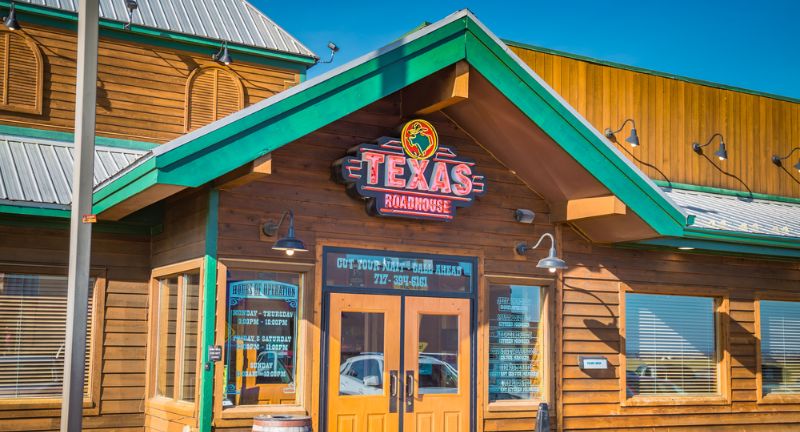
5) Texas Roadhouse
Famous for its laid-back, fun atmosphere, Texas Roadhouse serves hand-cut steaks, fresh-baked bread, and made-from-scratch sides. It’s known for its lively ambiance, including line dancing staff and peanut shells on the floor. They also offer a range of ribs, chicken, and seafood for those looking for something other than steak.

6) Outback Steakhouse
This Australian-themed restaurant is popular for its casual dining atmosphere and diverse menu, featuring steak, chicken, ribs, seafood, and the famous Bloomin’ Onion. Outback offers a relaxed environment, perfect for family dining or casual outings. They also have a range of cocktails and beers to complement their meals.

7) LongHorn Steakhouse
With a Western-themed decor, LongHorn Steakhouse offers a variety of steak cuts, like the Renegade Sirloin and the LongHorn Porterhouse. The ambiance is casual and welcoming, with a focus on hearty American fare. They also serve burgers, salads, and a variety of starters, ensuring something for every palate.

8) Del Frisco’s Double Eagle Steak House
Known for its luxurious and opulent setting, Del Frisco’s serves high-quality steaks and fresh seafood. The atmosphere is sophisticated, making it a prime choice for special occasions or business meetings. They also have a sommelier-curated wine list and offer classic steakhouse sides with a modern twist.

9) Smith & Wollensky
This steakhouse is known for its USDA Prime steaks, dry-aged on-site, and classic steakhouse menu items. The ambiance is traditional and elegant, reminiscent of classic New York steakhouses. Smith & Wollensky also offers impressive seafood towers, making it a great choice for surf and turf lovers.

10) STK Steakhouse
Blending the feel of a modern steakhouse with a chic lounge, STK offers a unique, vibrant dining experience. It’s known for its small, medium, and large steak cuts, catering to all appetites. The lively atmosphere, DJ-driven music, and contemporary decor make it popular among a younger crowd.

11) Peter Luger Steak House
This iconic New York steakhouse, with limited locations, is famous for its dry-aged steaks, particularly the porterhouse, which is often shared between two or more diners. The ambiance is old-school and no-frills, focusing on the quality of the food. Cash-only policy and traditional side dishes like creamed spinach and German potatoes make it a unique experience.

12) Sullivan’s Steakhouse
Offering hand-cut steaks, fresh seafood, and live music in some locations, Sullivan’s combines fine dining with an energetic atmosphere. The setting is stylish yet comfortable, suitable for both romantic dinners and lively gatherings. They also have a notable selection of martinis and wines.

13) Eddie V’s Prime Seafood and Steaks
While it’s known for its seafood, Eddie V’s also offers high-quality, hand-cut steaks in a sophisticated setting. The ambiance is upscale, with live jazz in the V Lounge adding to the elegant experience. The menu includes an impressive selection of fresh oysters and caviar, alongside their steaks.

14) Gibsons Bar & Steakhouse
A Chicago favorite, Gibsons is the first steakhouse in the country to be awarded its own USDA Prime Certification. The atmosphere is classic and bustling, filled with the charm of old Chicago. Their extensive menu includes Gibsons Prime Angus beef and a variety of seafood options.

15) Bob’s Steak & Chop House
This chain is known for its prime steak cuts, big portions, and traditional steakhouse sides like glazed carrots and smashed potatoes. The ambiance is upscale yet unpretentious, with a focus on quality and simplicity. Bob’s also offers a selection of fine wines and classic desserts to complete the dining experience.

16) Fogo de Chão
As a Brazilian steakhouse, Fogo de Chão offers an all-you-can-eat meat experience with gauchos carving meat at your table. The atmosphere is lively and festive, perfect for groups and family gatherings. They also have an extensive salad bar and traditional Brazilian side dishes.

17) BLT Steak
This modern American steakhouse combines bistro ambiance with quality steakhouse fare. Known for its warm popovers and a variety of steak cuts, BLT Steak offers a contemporary dining experience. The décor is sleek and modern, suitable for a trendy dining experience.

18) McCormick & Schmick’s
Although primarily a seafood restaurant, it offers a variety of high-quality steaks and a classic American steakhouse feel. The ambiance is upscale and traditional, ideal for business lunches or romantic dinners. They are also known for their seasonal menu and fresh ingredients.

19) Mastro’s Steakhouse
Offering a luxurious dining experience, Mastro’s is known for its high-quality steaks, fresh seafood, and live entertainment in some locations. The setting is sophisticated and opulent, with a lively atmosphere in the evenings. They also have a renowned butter cake, which is a must-try for dessert lovers.

20) Wolfgang’s Steakhouse
Established by a former Peter Luger’s head waiter, Wolfgang’s serves classic steakhouse fare in an upscale setting. The restaurant is known for its dry-aged steaks, particularly the porterhouse, served in a sophisticated environment. The wine list is extensive, and the ambiance exudes a classic New York steakhouse feel.
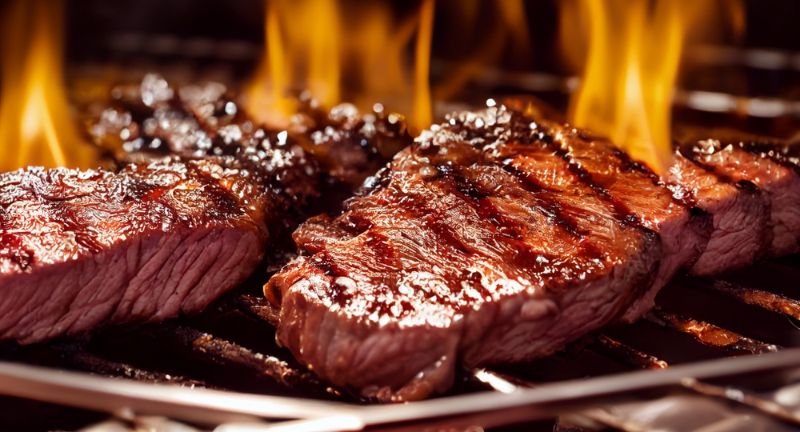
These 20 steakhouse chains represent the finest in American dining, each offering a unique twist on the classic steakhouse experience. From the elegant and sophisticated ambiance of Ruth’s Chris and Morton’s, to the lively and casual atmosphere of Texas Roadhouse and Outback Steakhouse, there’s a venue to suit every taste and occasion. Whether you’re seeking the finest USDA Prime steaks, innovative culinary creations, or just a hearty, satisfying meal in a welcoming environment, these steakhouses are sure to provide an unforgettable dining experience. With each chain boasting its own distinct charm and specialties, steak lovers across the U.S. are spoilt for choice when it comes to enjoying some of the best steaks the country has to offer
What To Read Next
- This Genius Trick Every Online Shopper Should Know
- Best High-Yield Savings Accounts This Month
- Best Gold IRA This Year
- Deals On Popular Cruises
- The Best Internet Deals For Seniors
- Affordable Life Insurance Options for Seniors
For the Latest Travel News, Headlines & Videos, head to Bon Voyaged
More for You
Report: Former Bears quarterback died from cancer
19 Things People Treat As Safe That Actually Are Pretty Dangerous
The 11 Smells That Squirrels and Chipmunks Hate
We Ordered 7 Fast-Food Breakfast Sandwiches to Find the Best One
Netflix viewers threaten to cancel memberships after ‘dumb’ price change
The songs that spent the longest at the #1 spot on the Billboard charts
17 Traditions Gen Z Don’t Want to Continue Following
Bill Belichick rips Tom Brady, former Patriots players in hilarious appearance at Netflix roast
What Is the Most Poisonous Spider in the World?
A supercomputer simulation just predicted when humans will go extinct
Doctor shares what happens to our bodies moments before we die
I Cut My Food Expenses In Half Using The Viral "6-To-1" Grocery Method — Here's How
17 Phrases Confident People Use to Stand Up For Themselves
18 ‘Normal’ Things From the ’80s and ’90s That Are Considered Luxuries Now
Trump's speech at a libertarian convention reflects a new desperation for votes
7 Smells That Ants Absolutely Hate
20 country artists you need to watch in 2024
Your senses will shut down in a specific order when you’re about to die
Employers Are Avoiding Hiring Gen Z Workers- Here's Why
25 of the most famous final shots from Hollywood history

IMAGES
VIDEO
COMMENTS
Ruth is a poor young Moabite widow who has followed Naomi, her aged mother-in-law, back to Israel, trying her utmost to survive in a foreign land. Boaz is a wealthy landowner and highly respected Israelite from Bethlehem. He is a relative, a guardian-redeemer of Elimelek (Ruth 2:20), Naomi's late husband. ... Our Daily Bread Journey Through ...
The story of Ruth starts with Elimelek making the difficult decision to relocate his family to Moab. It has become impossible to put food on the table because of a famine in the land ( Ruth 1:1 ). Elimelek lives ″in the days when the judges ruled″ (1:1). We are not told when exactly this was within the 300-year period (about 1380-1050 BC) 4 ...
Journey through the book of Ruth, and discover how we can be part of God's story as He leads us to accomplish His divine plan. The Journey Through series provides assistance to those who desire to spend time with God in His Word, book by book. The biblical insights will help Christians discover the precious, life-transforming wisdom of the ...
The Wisdom Journey through Ruth. In the midst of the dark days of the Judges, we find a beautiful story of love and faith and faithfulness recounted in the little book of Ruth. When Israel as a nation had turned away from the Lord, a man named Boaz remained faithful to God and His Word. When the pagan nations surrounding Israel were steeped in ...
The Moabites, who were descended from Lot through an incestuous union with his older daughter (Genesis 19:30-38), were long-time enemies of the Israelites (Numbers 22-25). When the Israelites were making their way into the Promised Land, Moabite women seduced the Israelite men and led them into idolatry, causing them to sin against the Lord.
As Ruth is gleaning, Boaz comes into his fields to see the progress of the barley harvest. ″Just then″ (Ruth 2:4) indicates divine providence and timing, for the simultaneous arrivals of Ruth and Boaz are no coincidence. ... the Journey Through Series devotional, and is a regular contributor to the Insights for Our Daily Bread. K.T. has ...
Ruth has proposed marriage to Boaz (Ruth 3:9). Though he wants to marry her, Boaz cannot accept the proposal just yet, as there is a nearer relative who has a stronger claim on Ruth. Boaz has to wait until the following day to ask this relative if he will marry Ruth or forego his right to do so (3:12-13). ... Author of Journey Through Series: 1 ...
10 Fredric W. Bush, Ruth-Esther, vol. 9, Word Biblical Commentary (Dallas, TX: Word, 1998), 95-96. ... the Journey Through Series devotional, and is a regular contributor to the Insights for Our Daily Bread. K.T. has taught the Bible in various countries. He has three daughters and one granddaughter. Author of Journey Through Series:
Journey through the book of Ruth, and discover how we can be part of God's story as He leads us to accomplish His divine plan. This devotional series from Our Daily Bread Ministries provides assistance to those who desire to spend time with God in His Word, book by book. Perfect for personal devotions.
Welcome to Week 2 (you read week one here) of our 10 week Bible study journey through the remarkable story of Ruth. As we continue to explore the life and legacy of this extraordinary woman, we find ourselves amidst the ever-shifting landscape of 2024, where navigating the challenges of womanhood feels far from predictable. Ruth's...
Join us as we look into the wonderful book of Ruth together.
So they were married and had a son, Obed, who "was the father of Jesse, father of David" (Ruth 4:17). That the Book of Ruth is read in the synagogue on the festival of Shavuot, which commemorates the giving of the Torah (the Five Books of Moses), alerts us to the book's possible connections with the Torah.But alas, both the usual explanation (that Shavuot celebrates the spring grain ...
Through her journey, Ruth exemplifies the power of generosity and the impact it can have on both the giver and the recipient. In the spirit of Ruth's generosity, let us be mindful of the opportunities we have to be kind-hearted towards others. Whether it is through lending a listening ear, offering a helping hand, or providing resources to ...
This seven day Ruth devotional is designed to take you on a journey. Join Ruth and Naomi as they wander through hardship and difficulties. This is a story of redemption and rescue. I pray as you journey through the book of Ruth, your final destination will be closer to your Creator.
Lesson #1 - There is Hope Even in the Most Devastating Times of Our Life. The book of Ruth begins by looking at the life of Naomi. After moving to Moab with her husband and sons, she loses her husband and becomes a widow. Just 10 years later her sons die, too. It seems that Naomi's entire life crumbles in those years.
Through her marriage to Boaz, Ruth is woven into the lineage leading up to David and, by Christian belief, to Jesus Christ himself. This genealogical connection can be found in the latter part of the Book of Ruth ( Ruth 4:17-22 ) and is expounded upon in other texts such as Ezra and Nehemiah , highlighting the integrative narrative of Hebrew ...
Explore Ruth's courageous journey as she trusts in God's provision amidst adversity and uncertainty. Through relatable reflections, discover how God works through others to provide for us, and learn to trust in His bigger plan for our lives.
Explore Ruth's courageous journey as she trusts in God's provision amidst adversity and uncertainty. Through relatable reflections, discover how God works through others to provide for us, and learn to trust in His bigger plan for our lives. Be encouraged to start this transformative devotional today and experience the life-changing power of God's unwavering provision and guidance.
This is when the story of Ruth begins. Having buried her husband, Mahlon, Ruth chose to follow her mother-in-law, Naomi, despite Naomi's repeated attempts to have her turn back and return to her family. Yet Ruth, understanding honor, love, and God's ways, refused to turn back, saying: "…'Entreat me not to leave you,
A. Background: Elimelech and his sons. 1. (1) A sojourn in Moab. Now it came to pass, in the days when the judges ruled, that there was a famine in the land. And a certain man of Bethlehem, Judah, went to dwell in the country of Moab, he and his wife and his two sons. a. In the days when the Judges ruled: This account begins in the closing days ...
Journey through the Principle. Ruth chose to follow the LORD and to accompany Naomi back to Bethlehem. Naomi gave Ruth the reasons she should stay in Moab. Naomi knew the obstacles Ruth would face as an outsider in Bethlehem. The only things in Ruth's favor were her loyal love to Naomi and her commitment to the God of Israel.
March 7, 2023. RUTH 1-4DAY 66 JOURNEY THROUGH THE BIBLE IN A YEARClick here for the readingFocus Verses For Today: Ruth 1:16-18. Our journey today takes us through the entire book of Ruth. We begin today's journey with Elimelek fleeing famine-ravaged Bethlehem, the place the Lord had given him, moving his family to Moab.
Ruth Poniarski, artist and author, bravely shares her story and announces her compelling memoir, "Journey of the Self-Memoir of an Artist." On this episode, Ruth shares her personal struggle with mental illness and how she courageously overcame life's most daunting challenges by inadvertantly ingesting "Angel Dust."
At Jamestown Settlement, Ruth E. Carter's history-making designs converge with historical attire of the 1600s and 1700s to transcend time periods through a unique comparison of clothing styles and ...
Indulge in the ultimate steak experience as we take you on a savory journey through the 20 best steakhouse chains in the United States. ... From the sizzling plates of Ruth's Chris Steak House ...